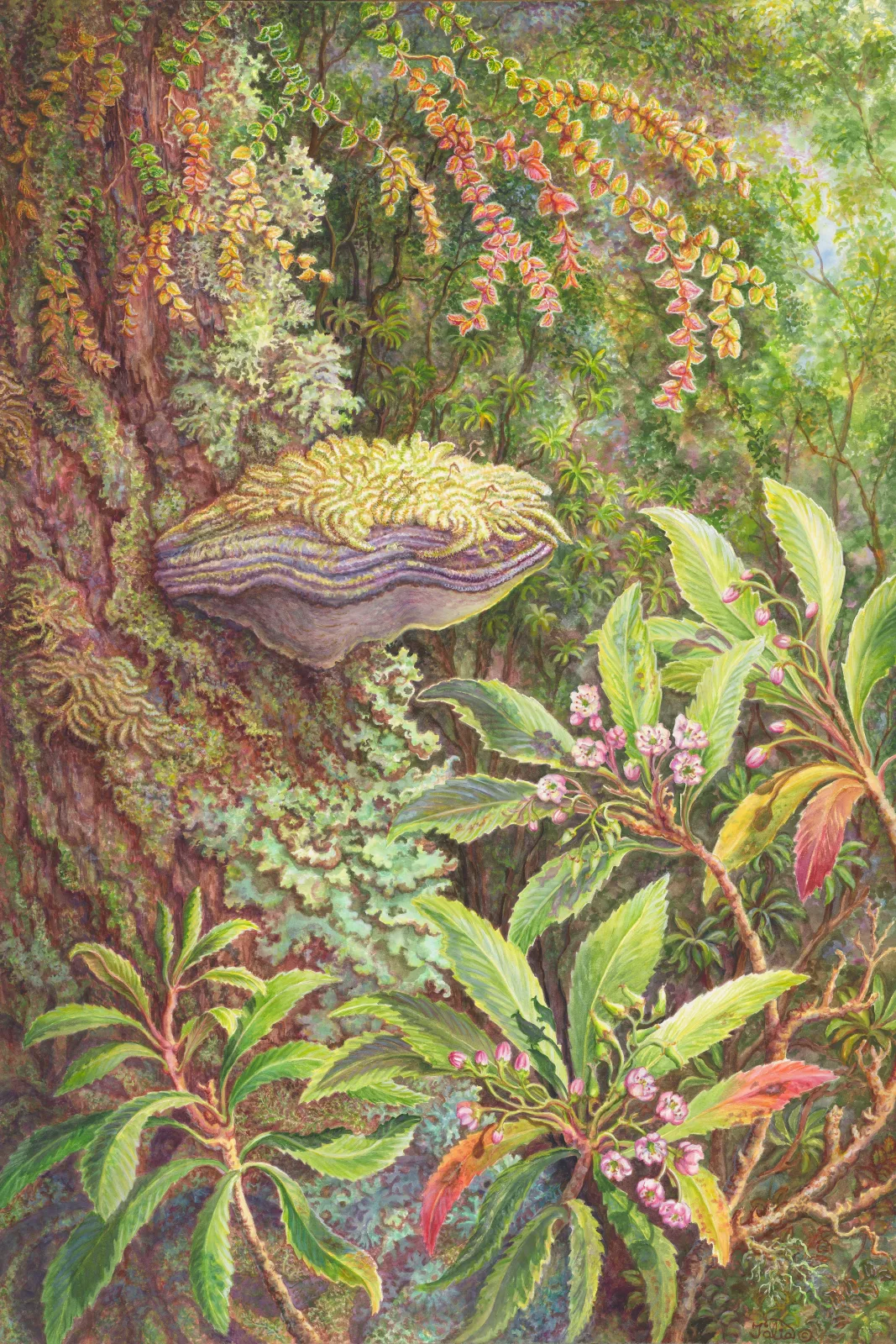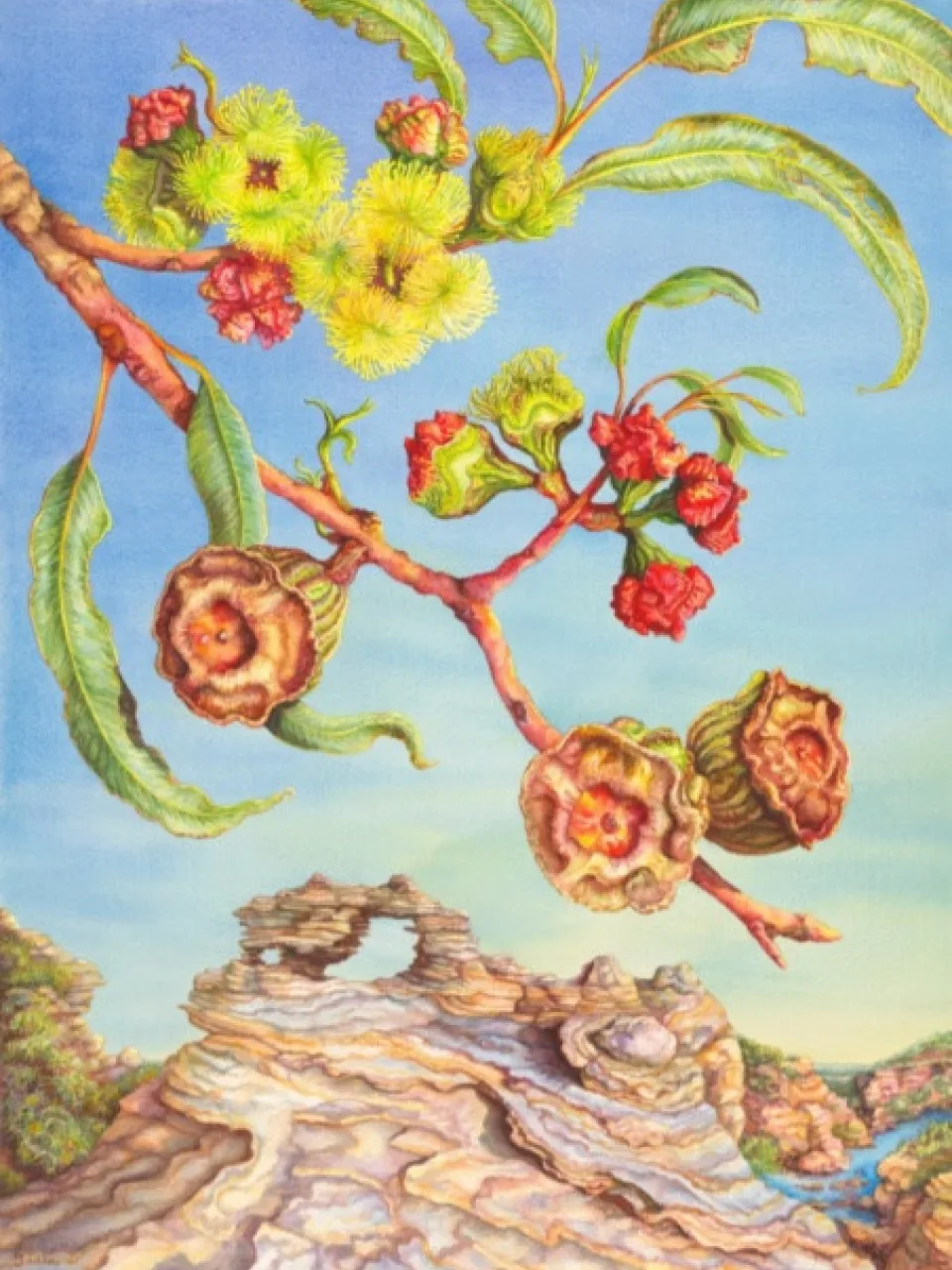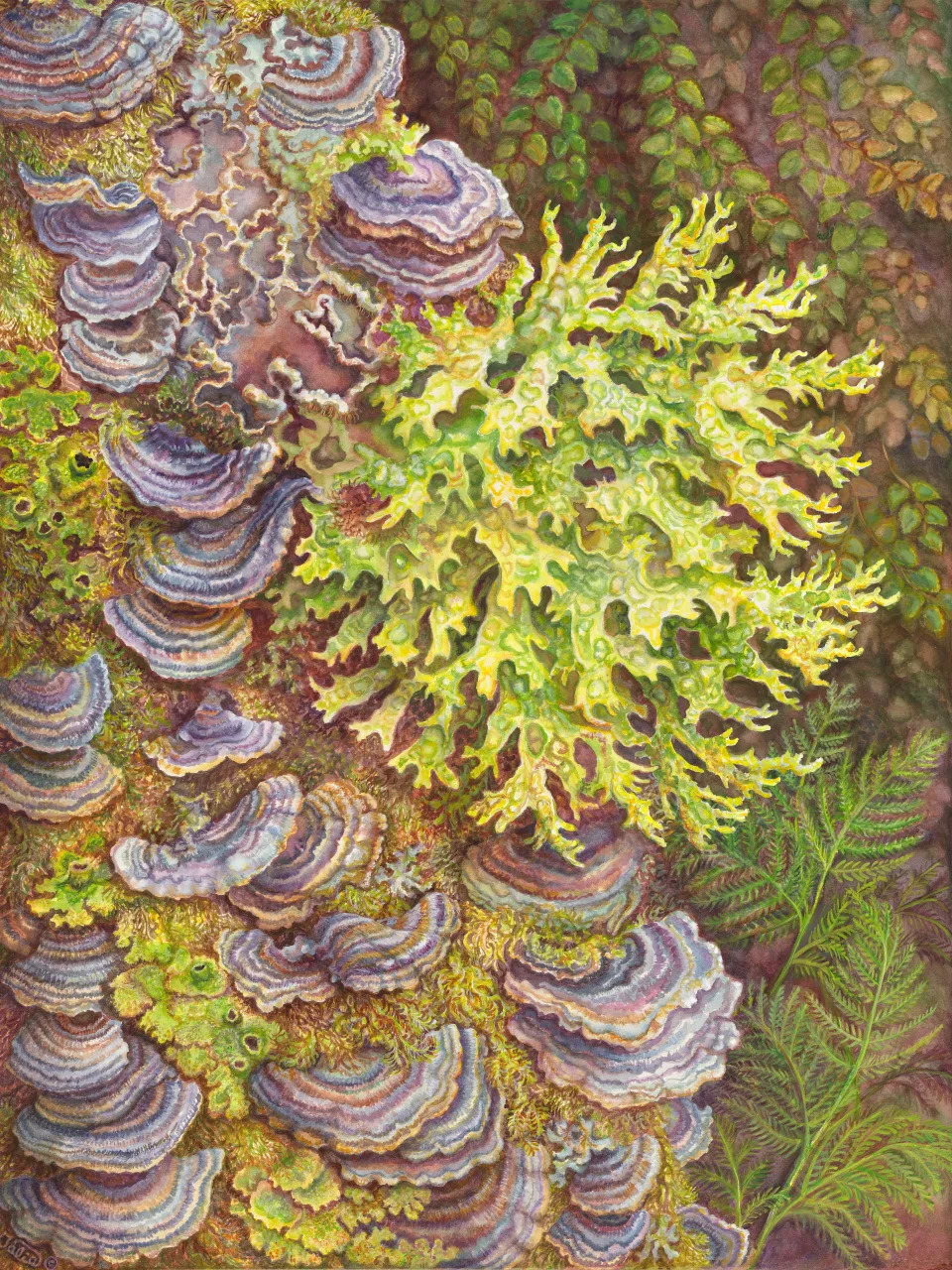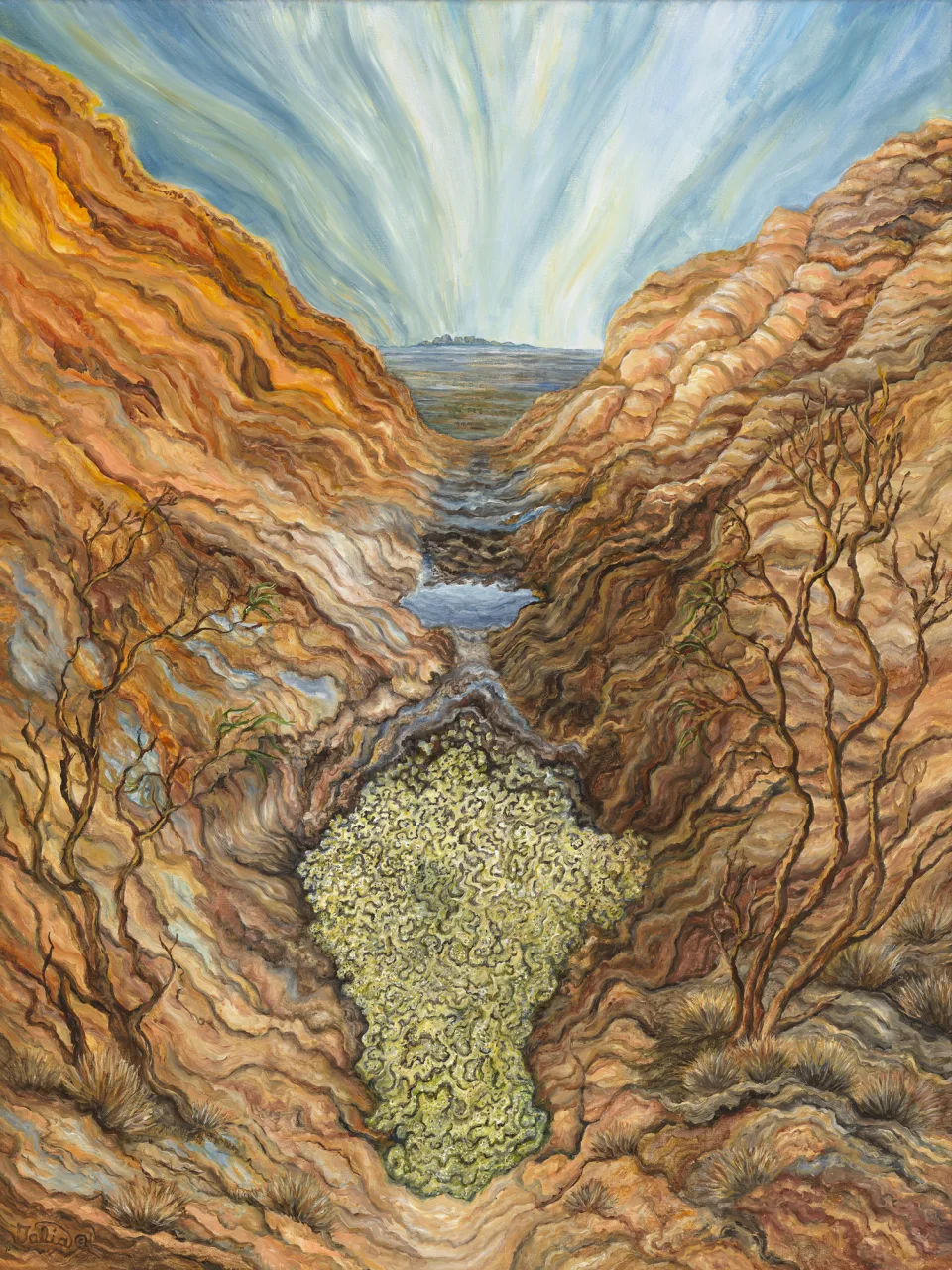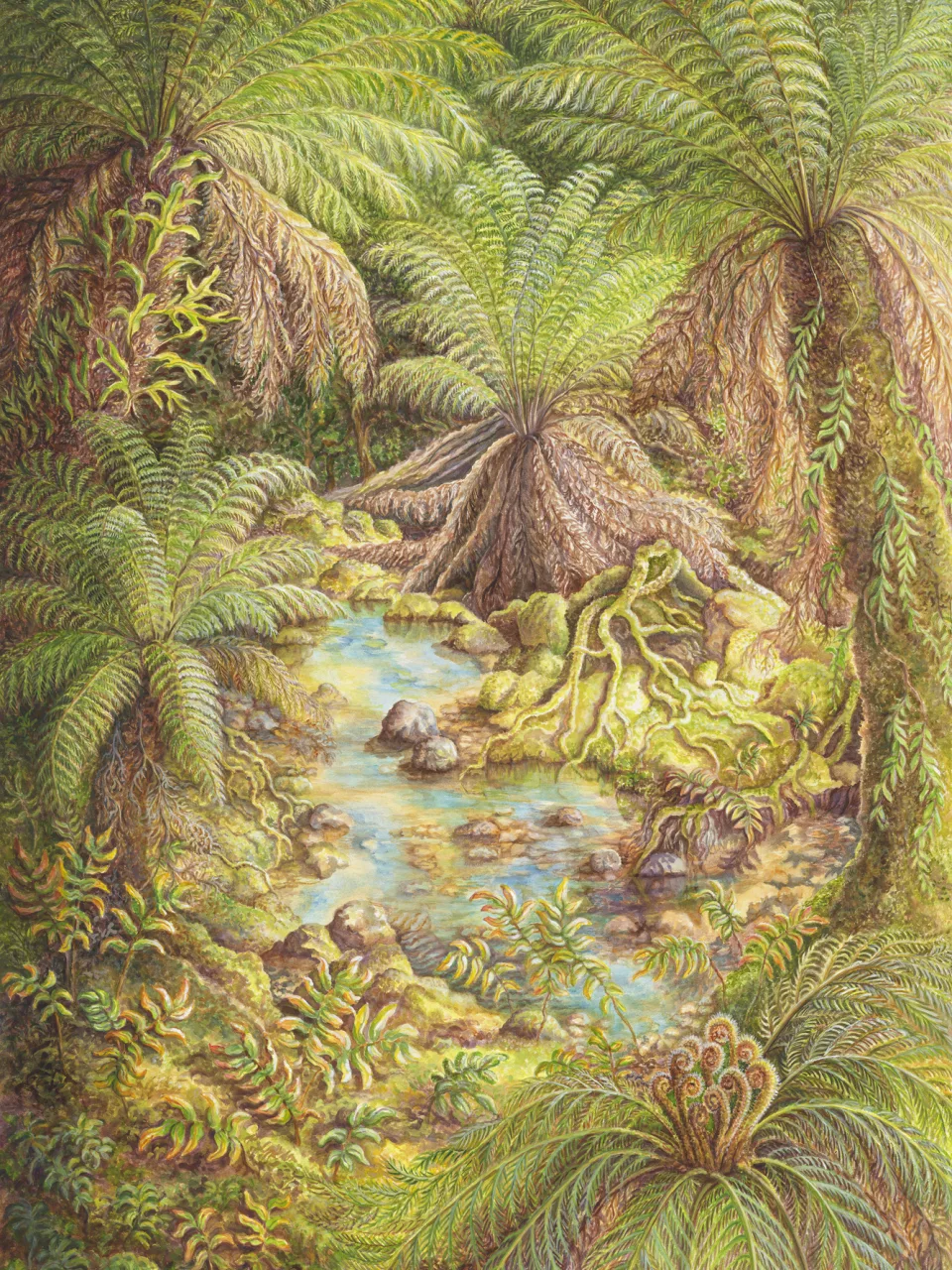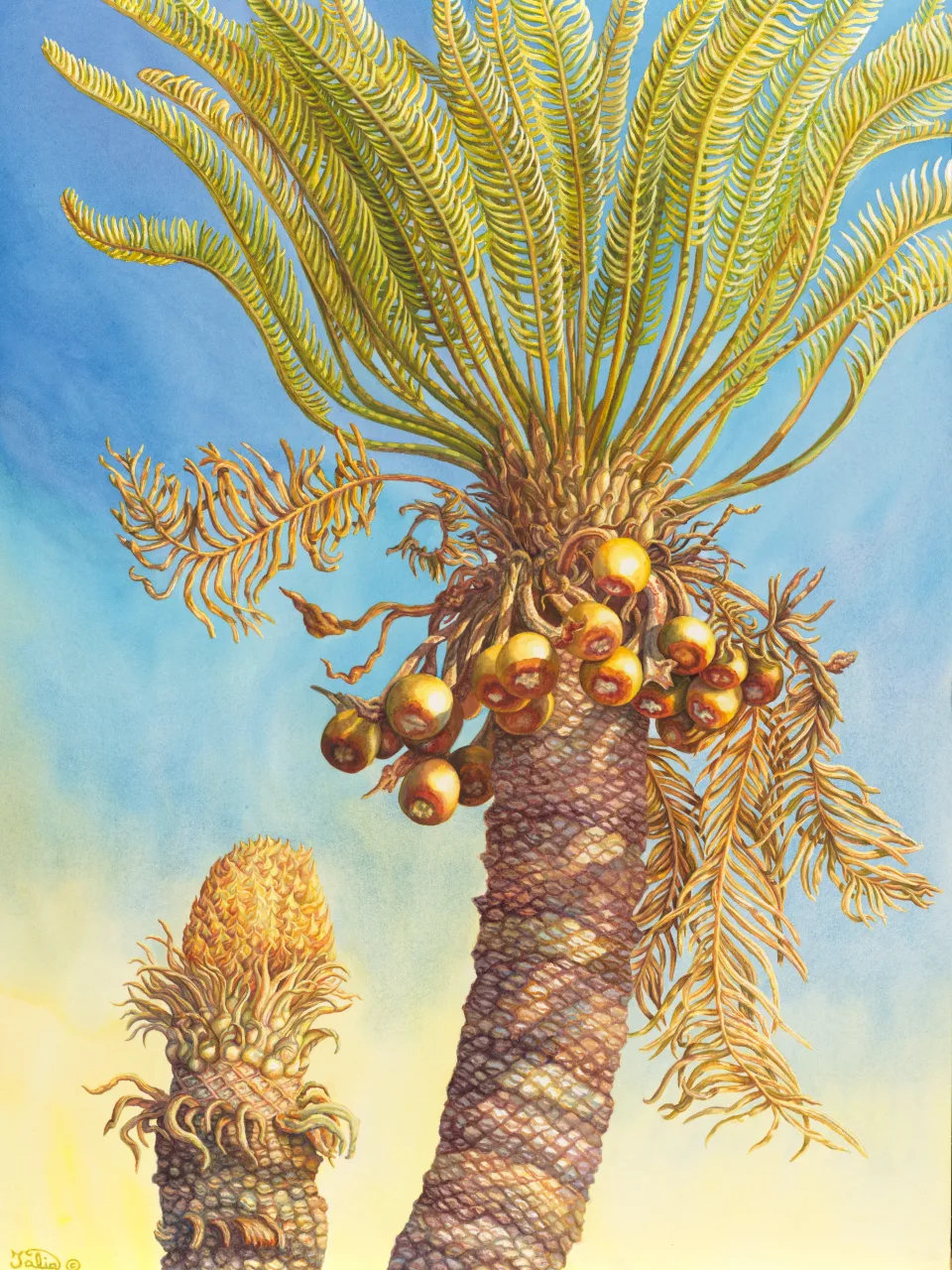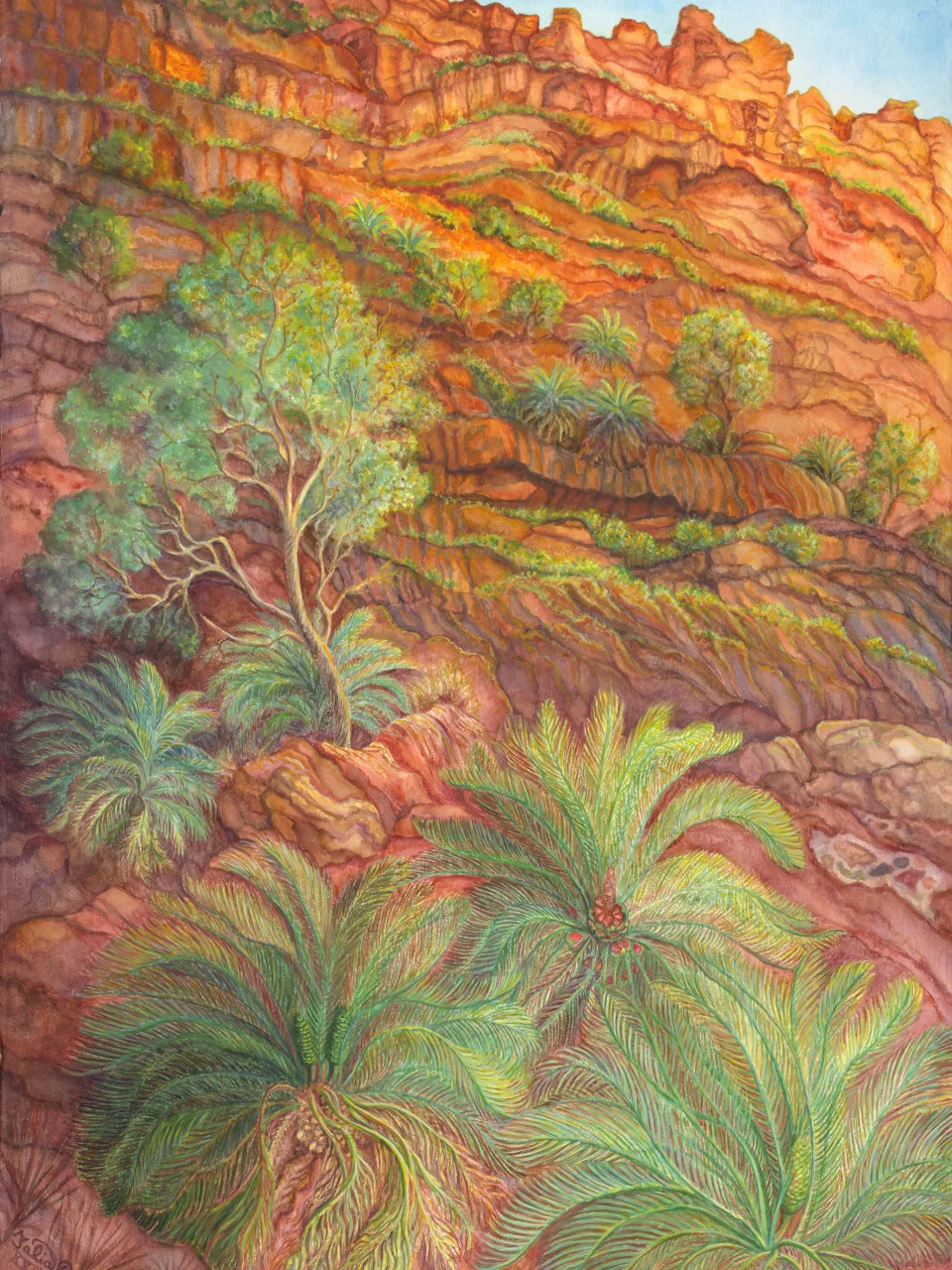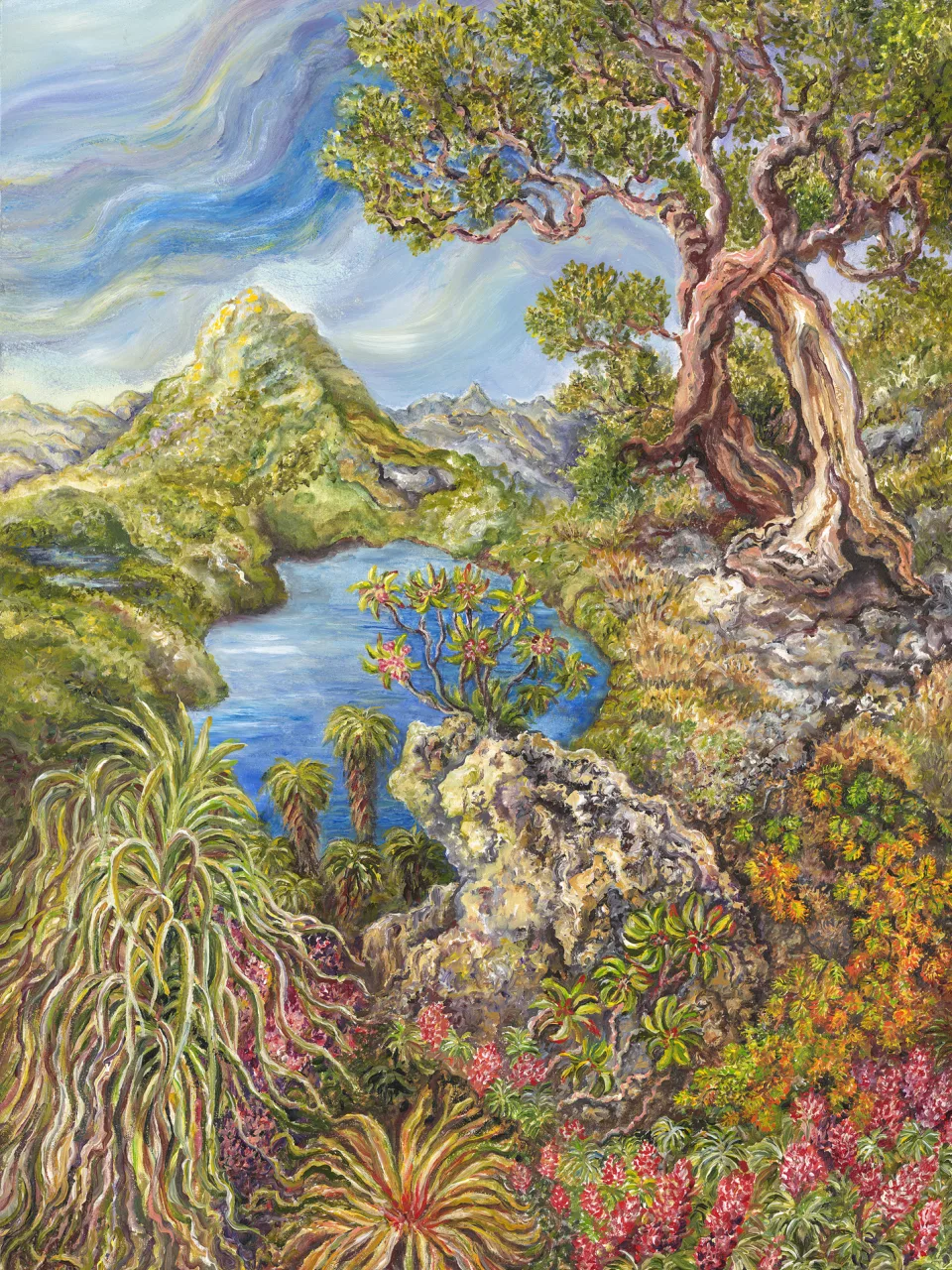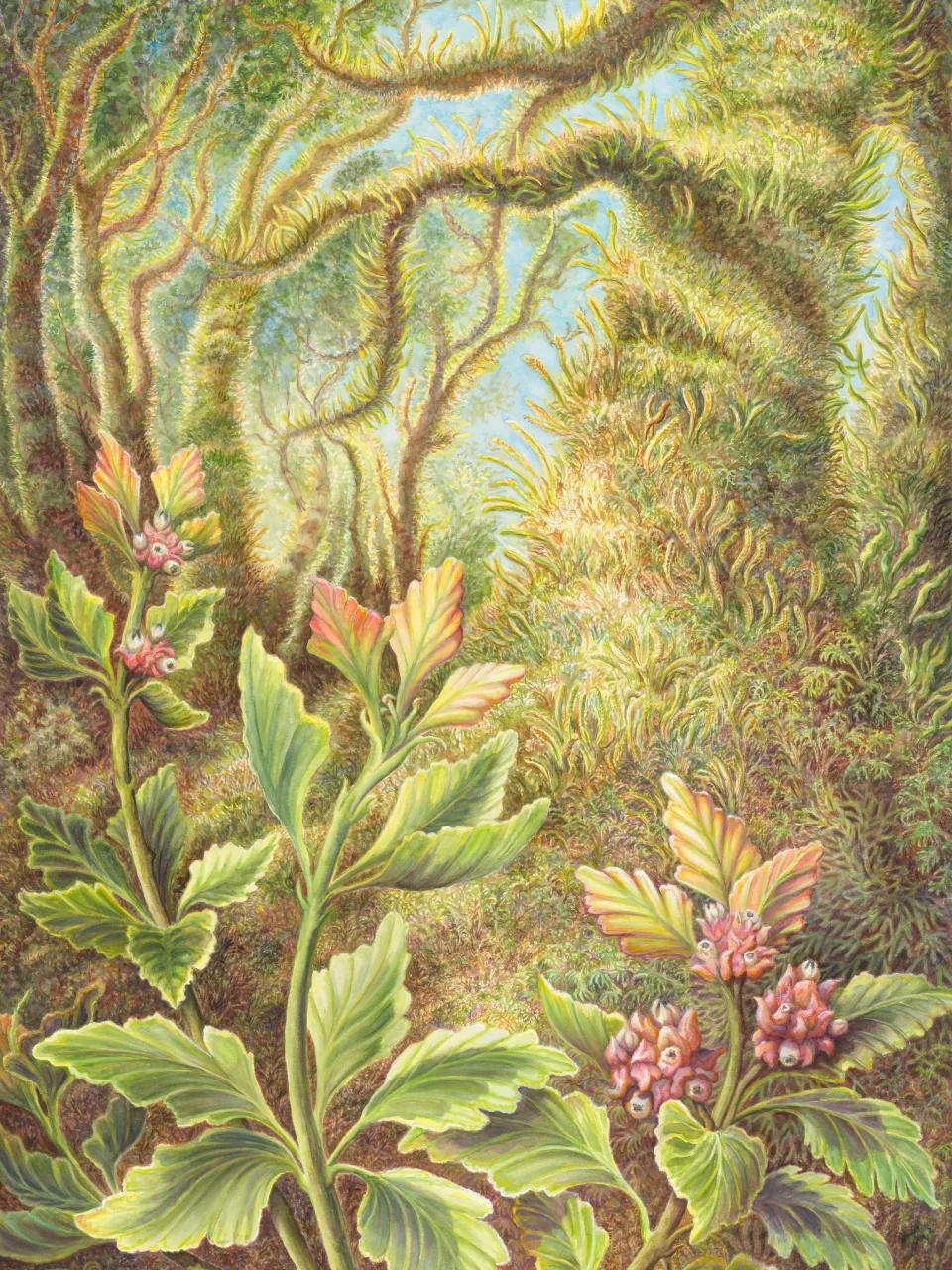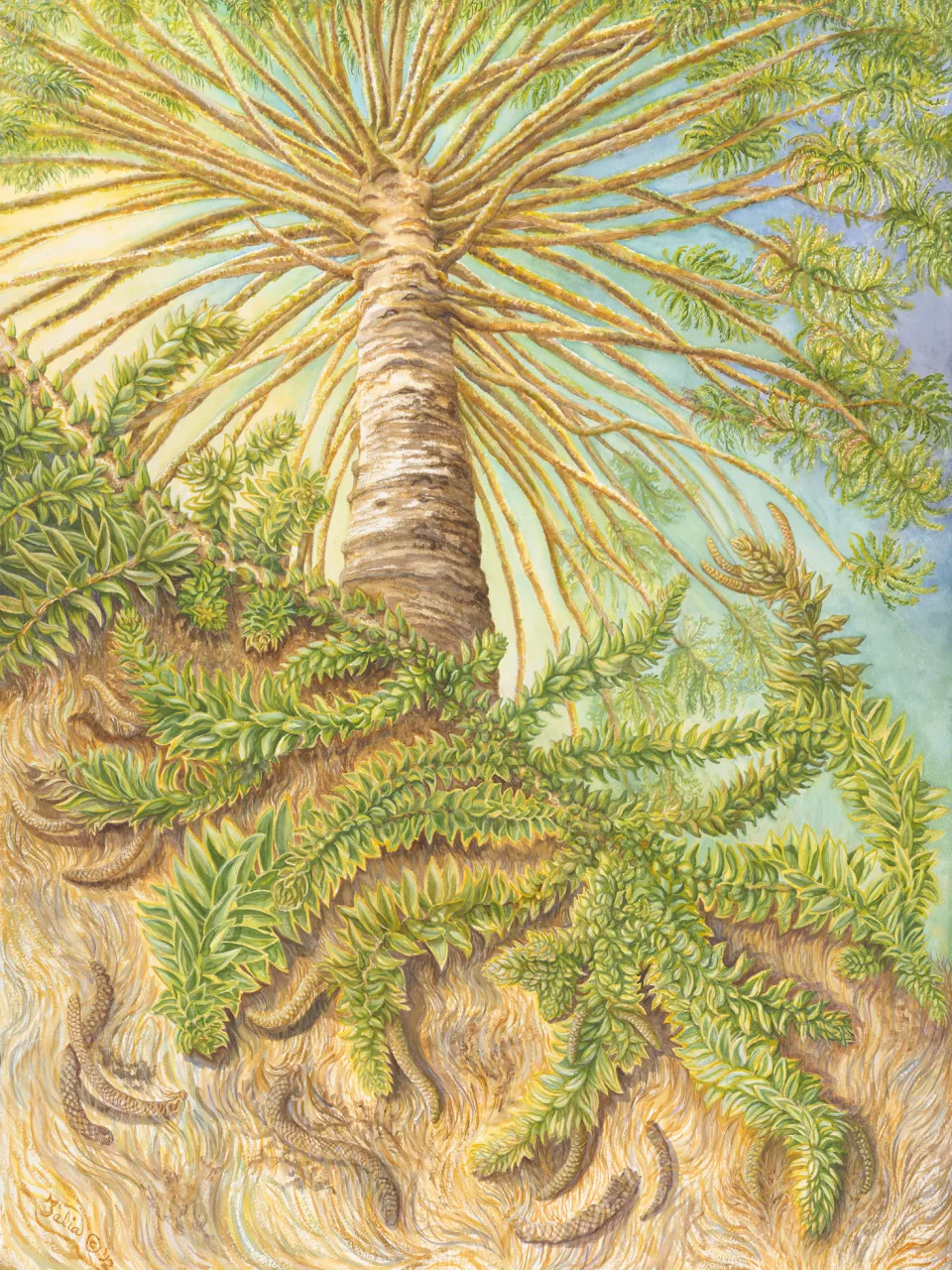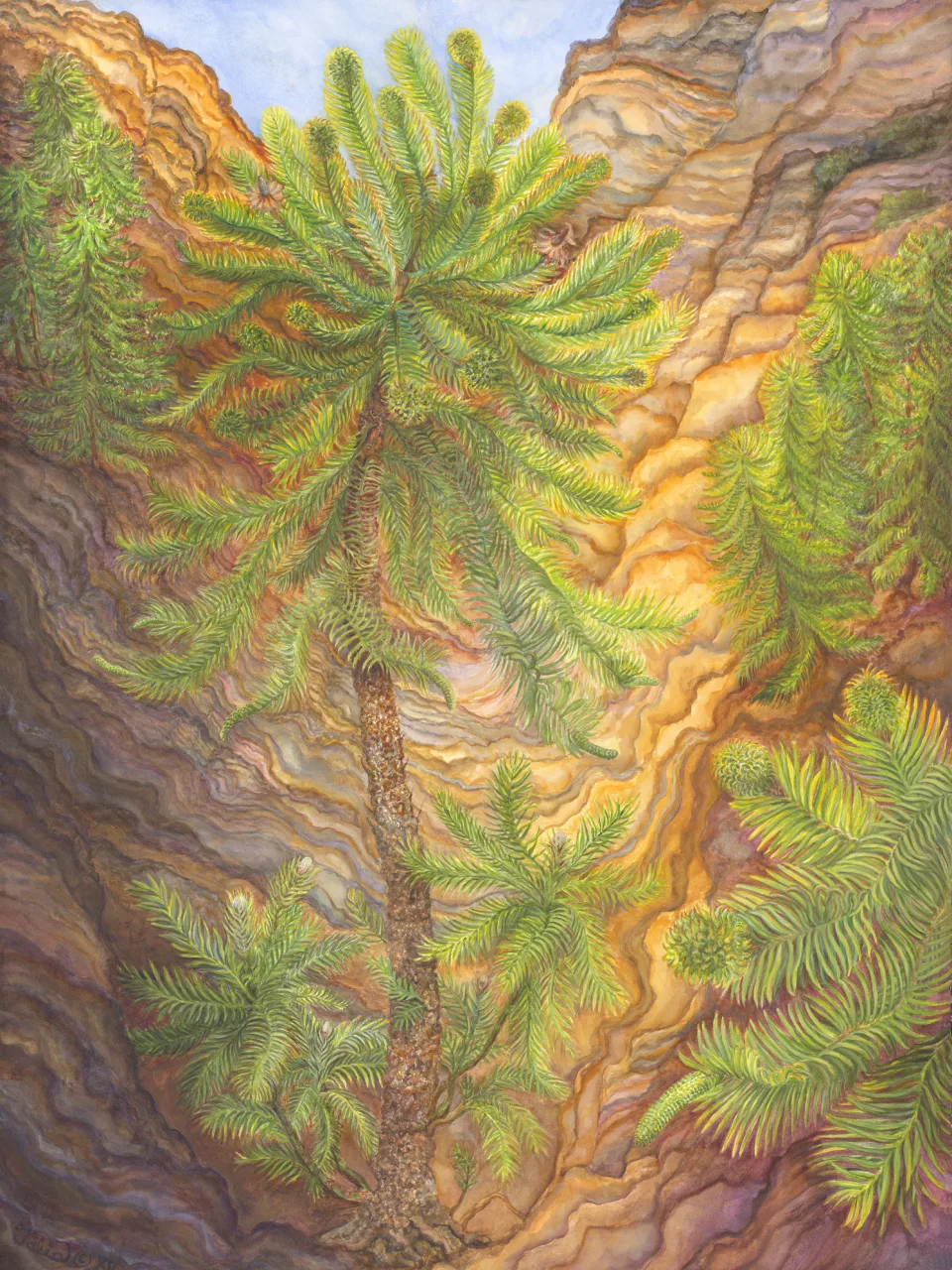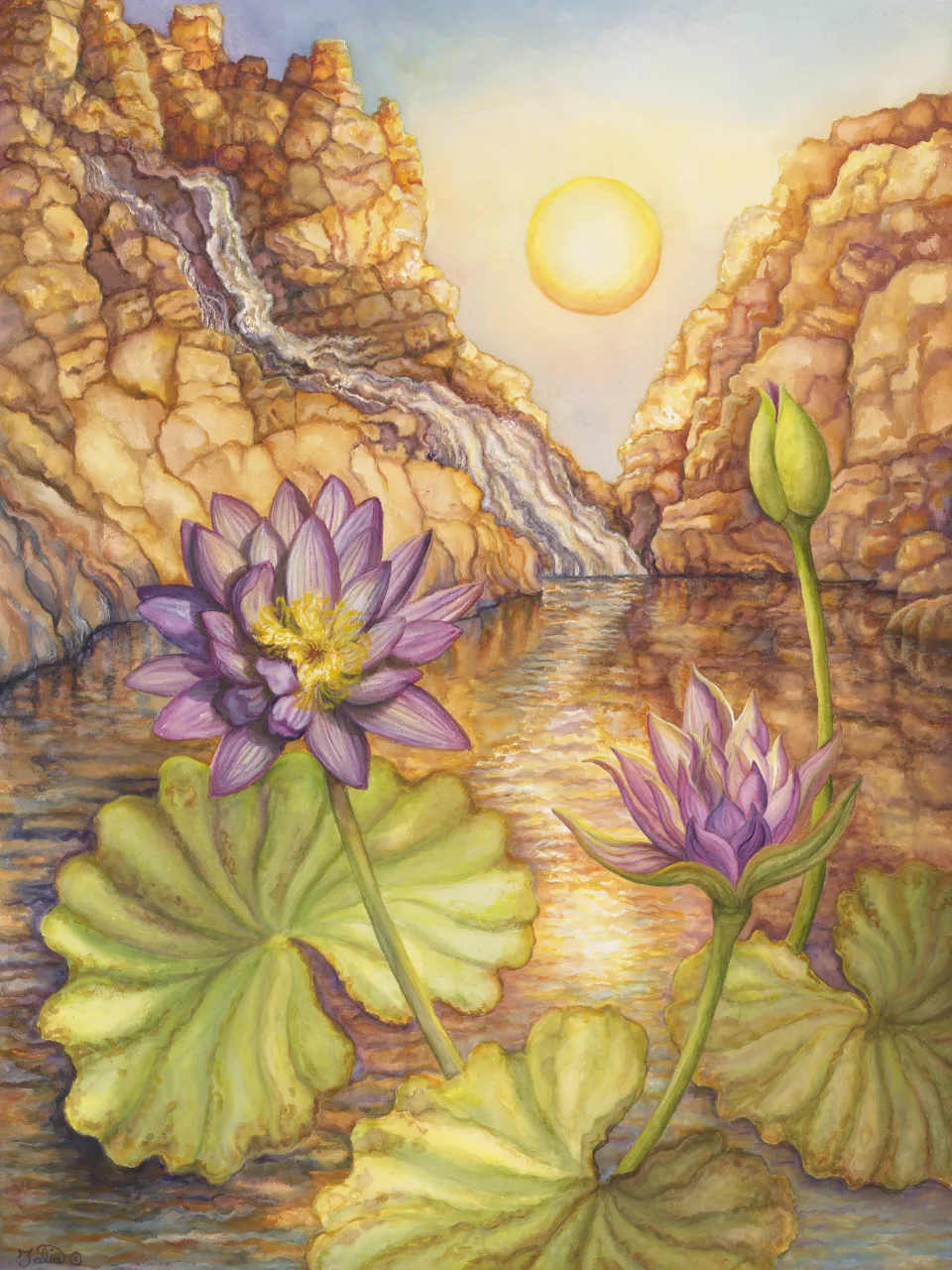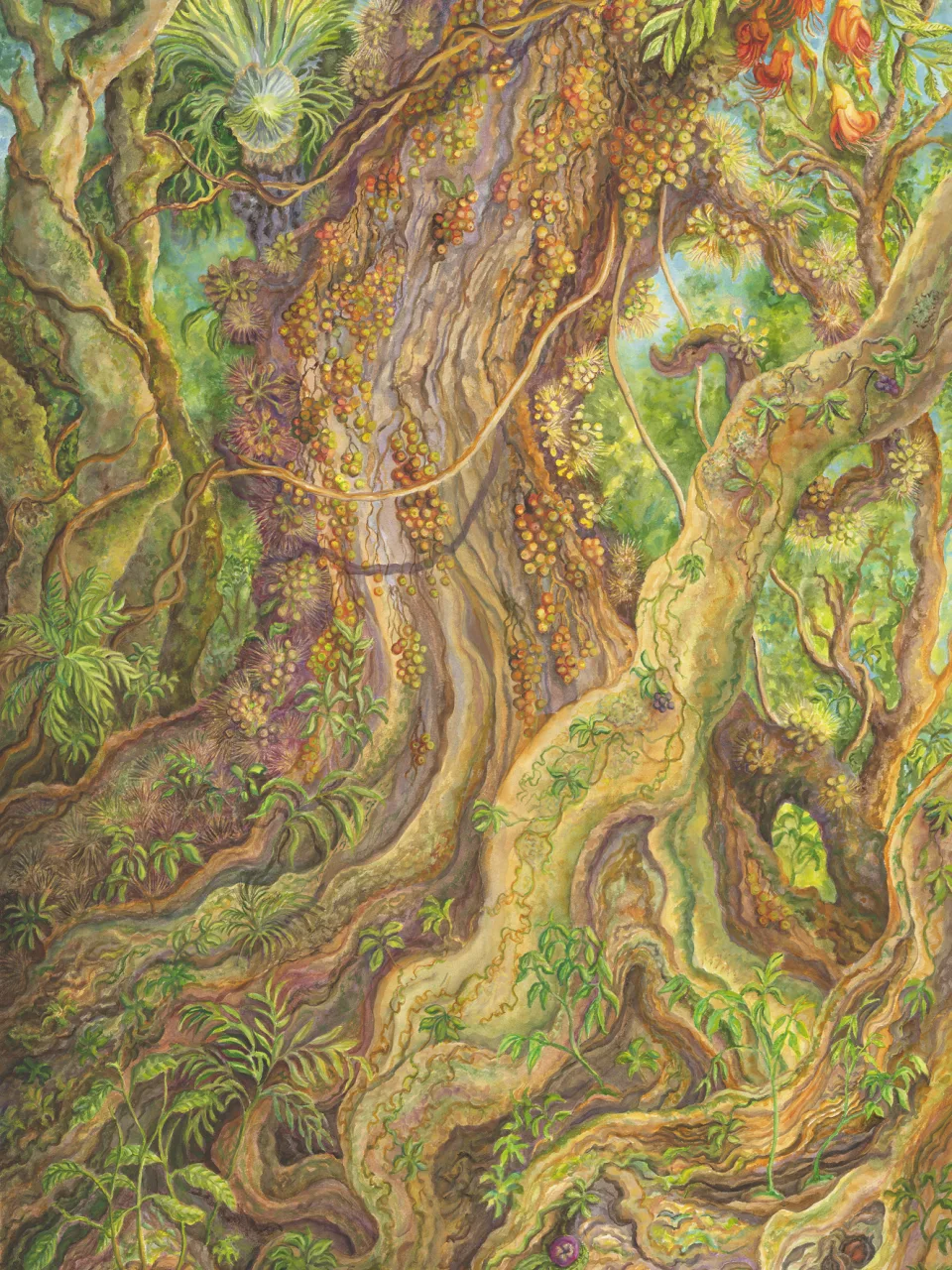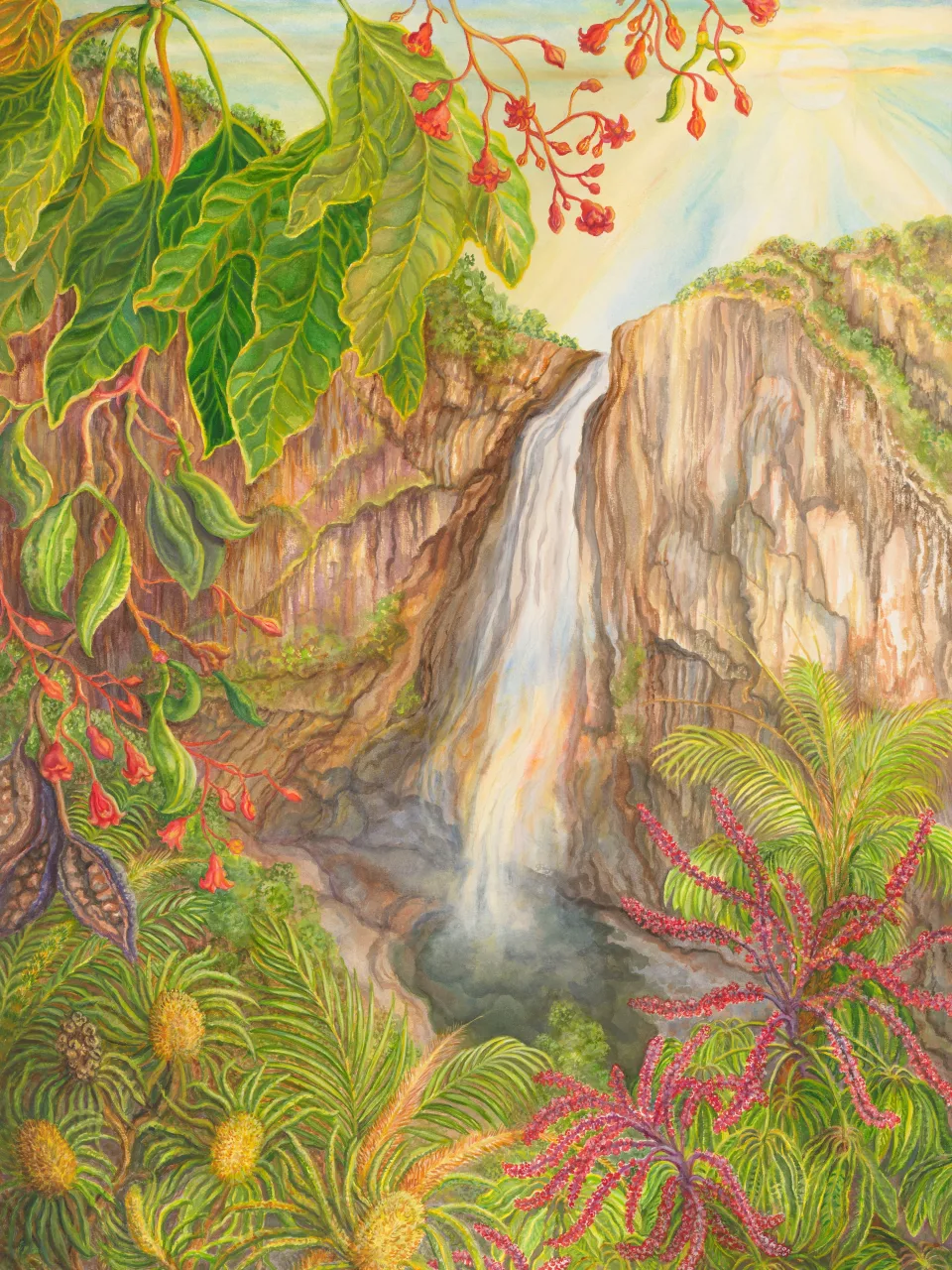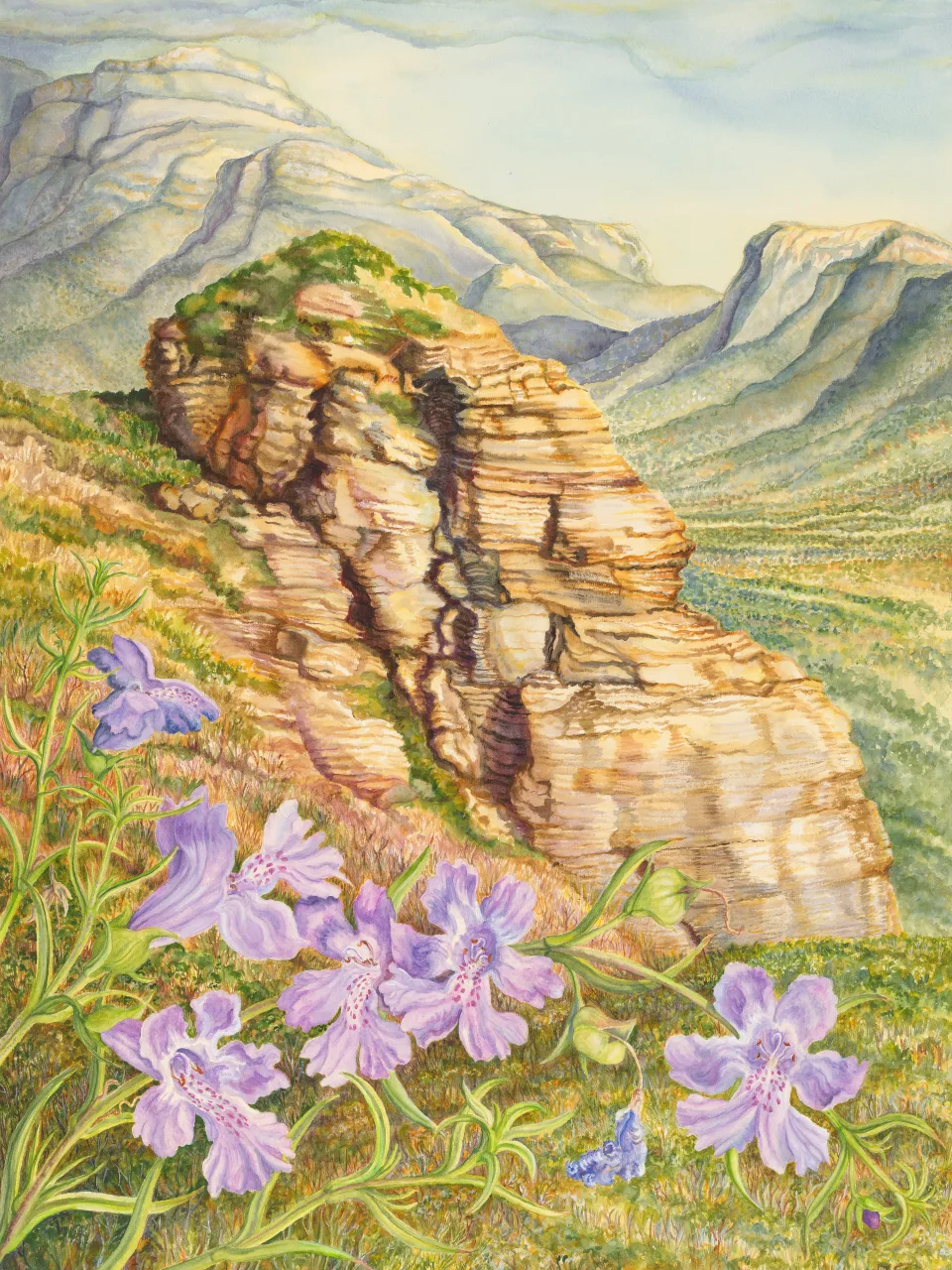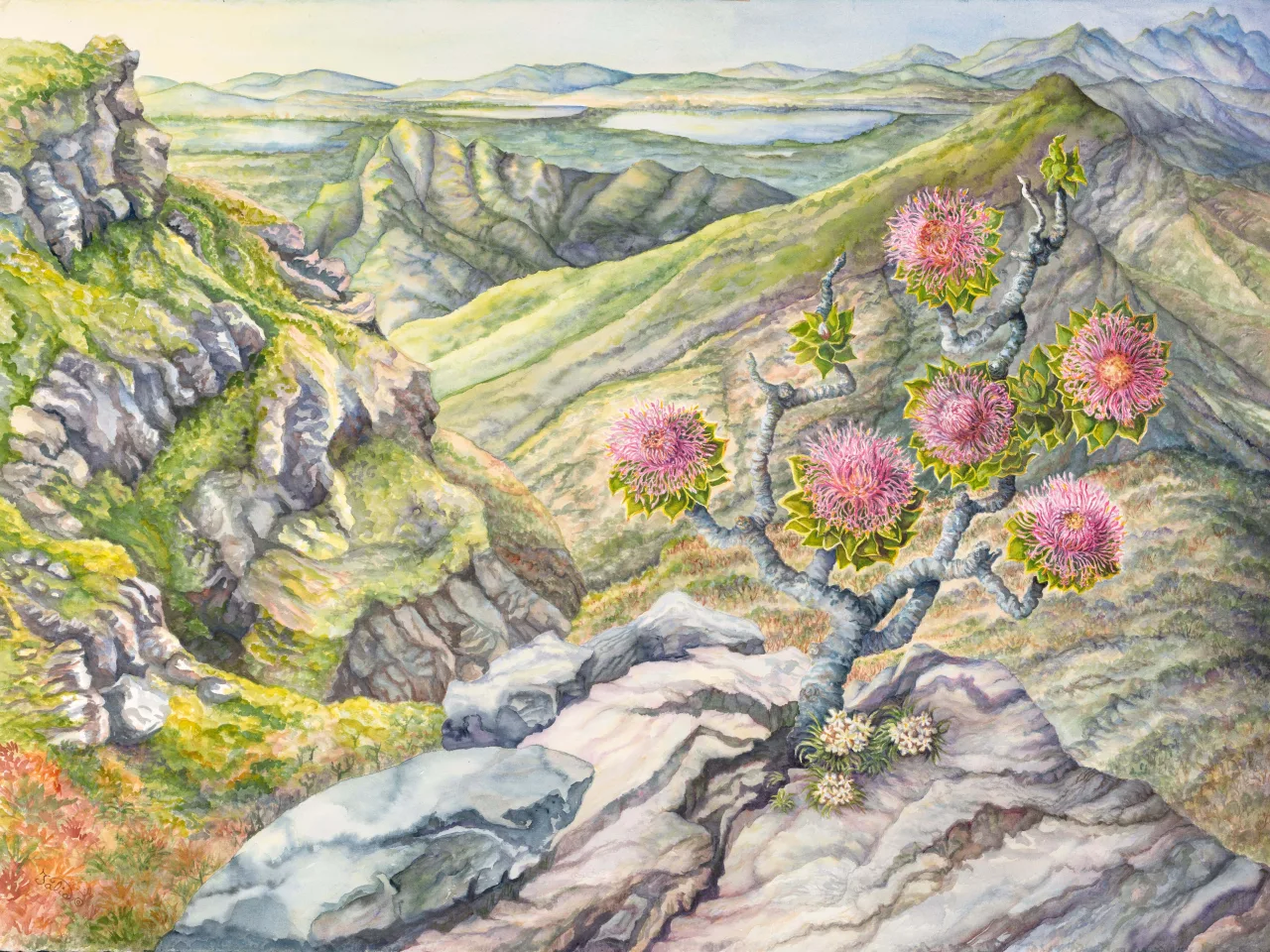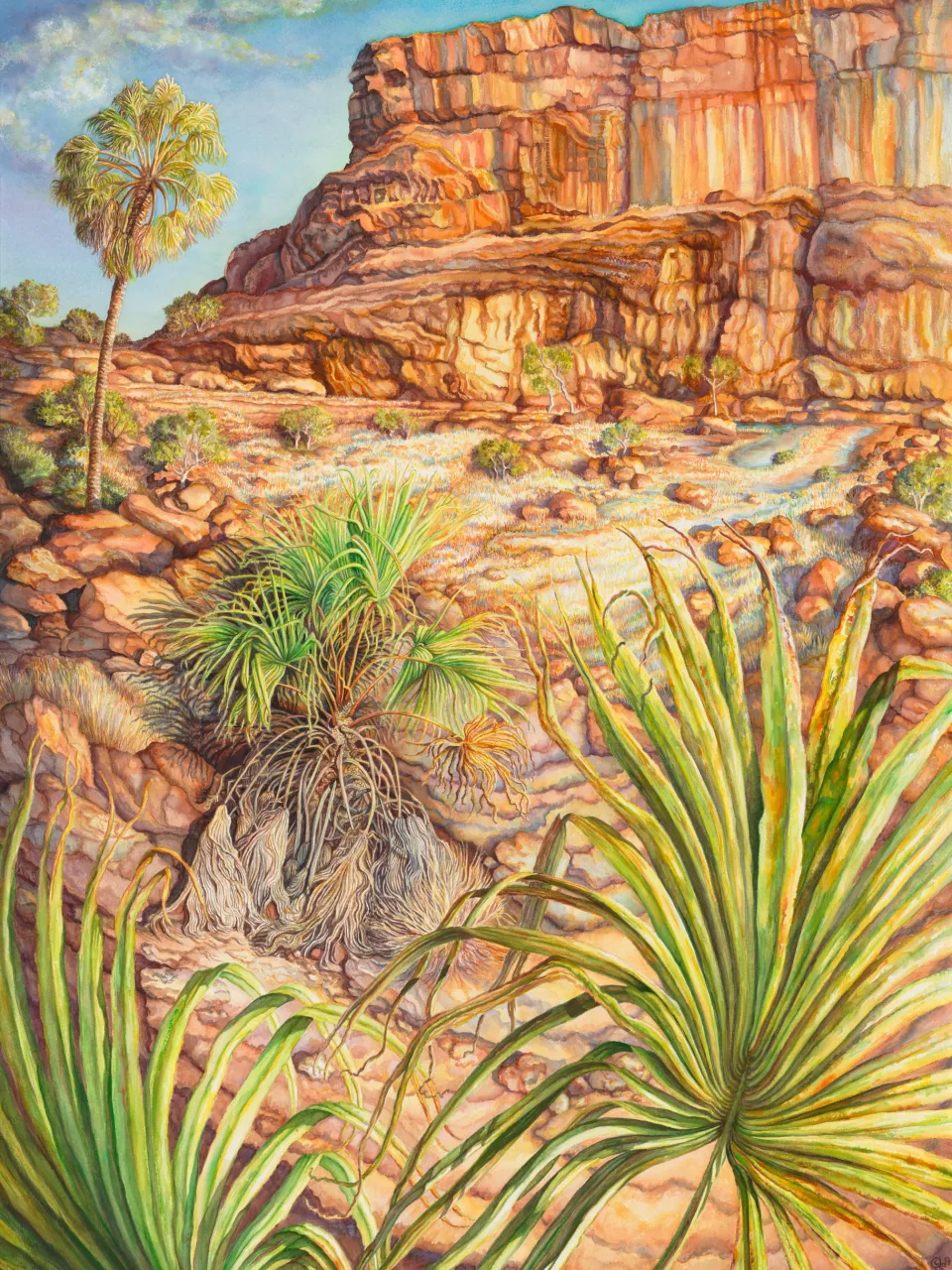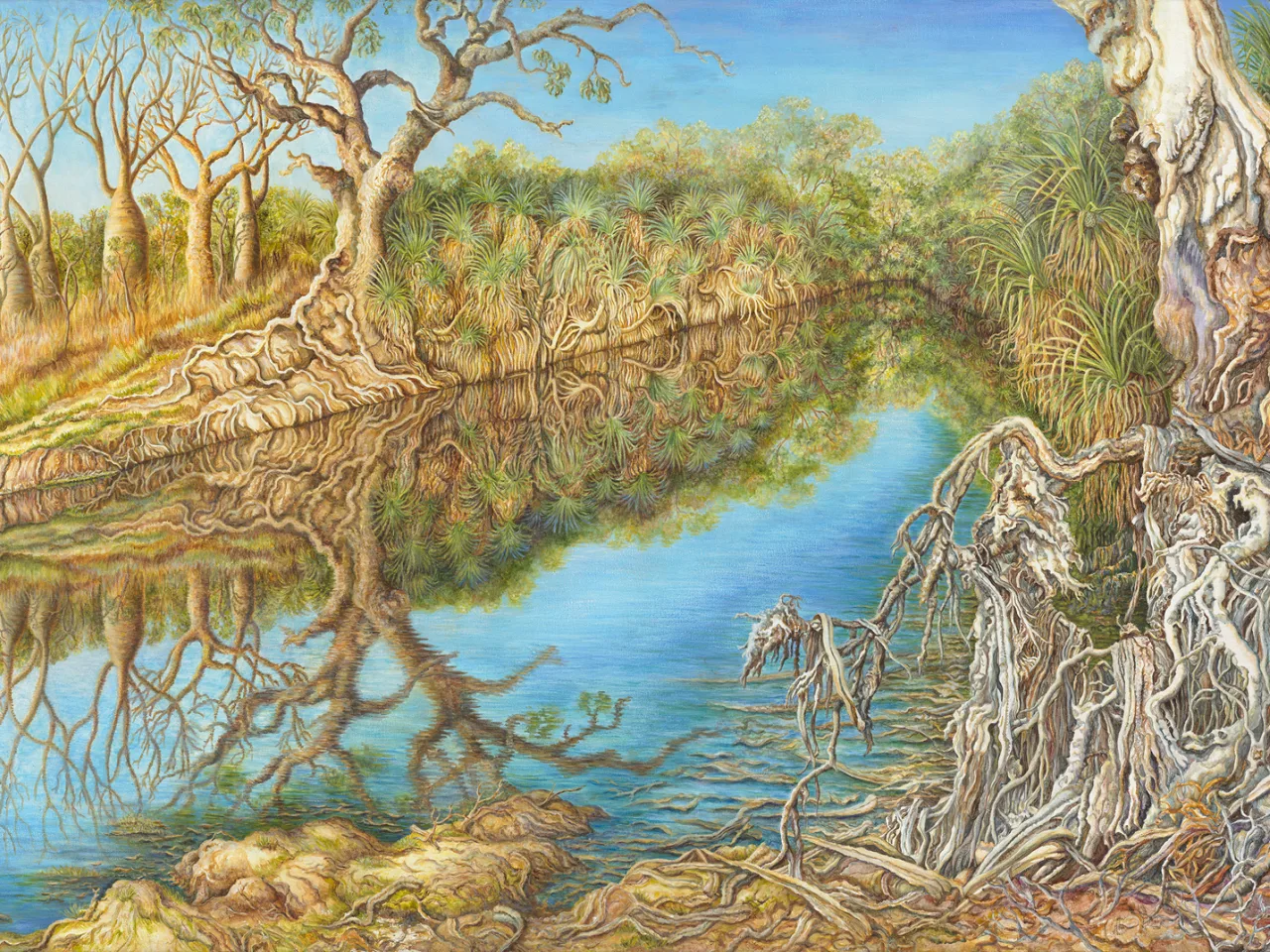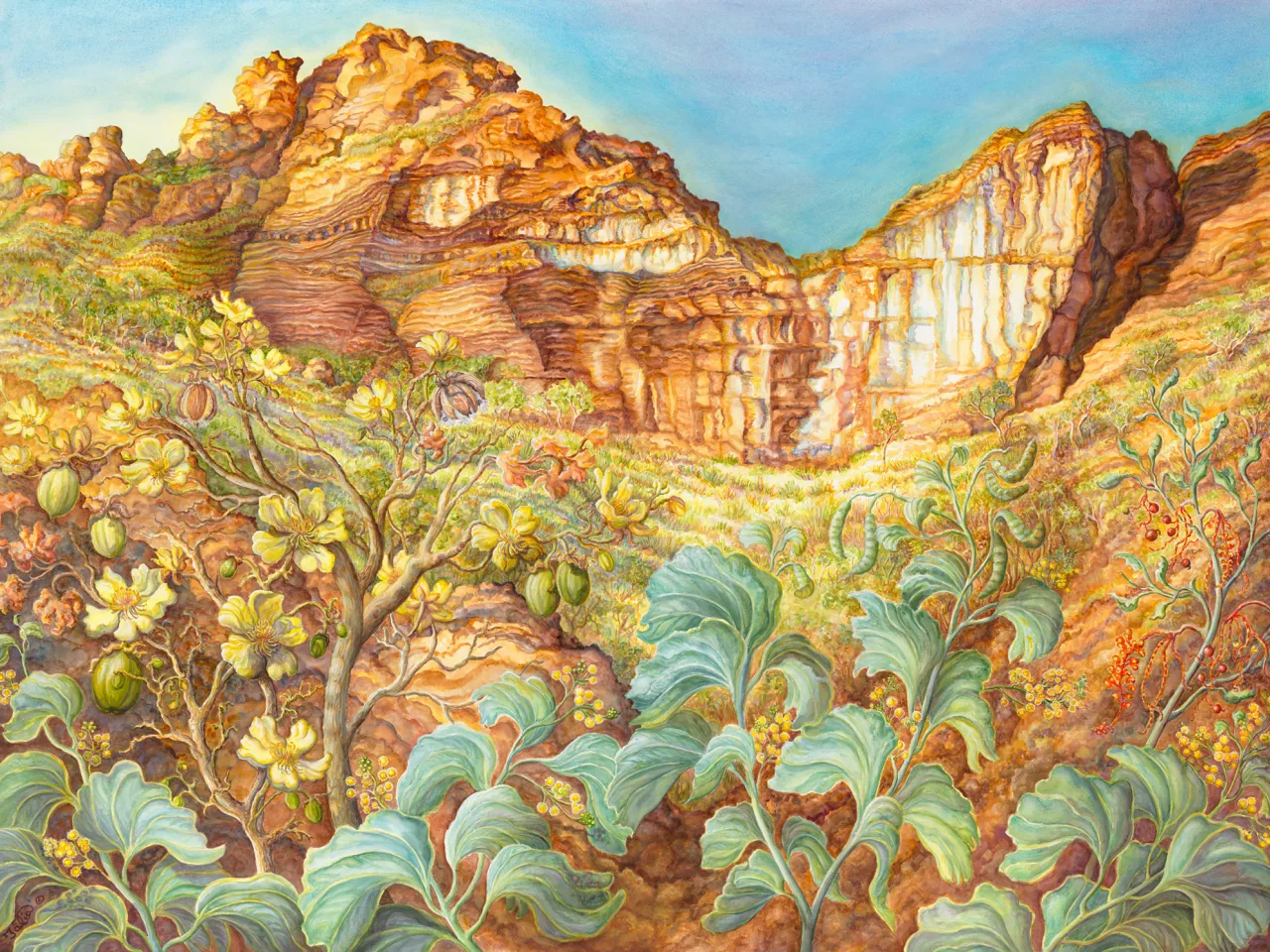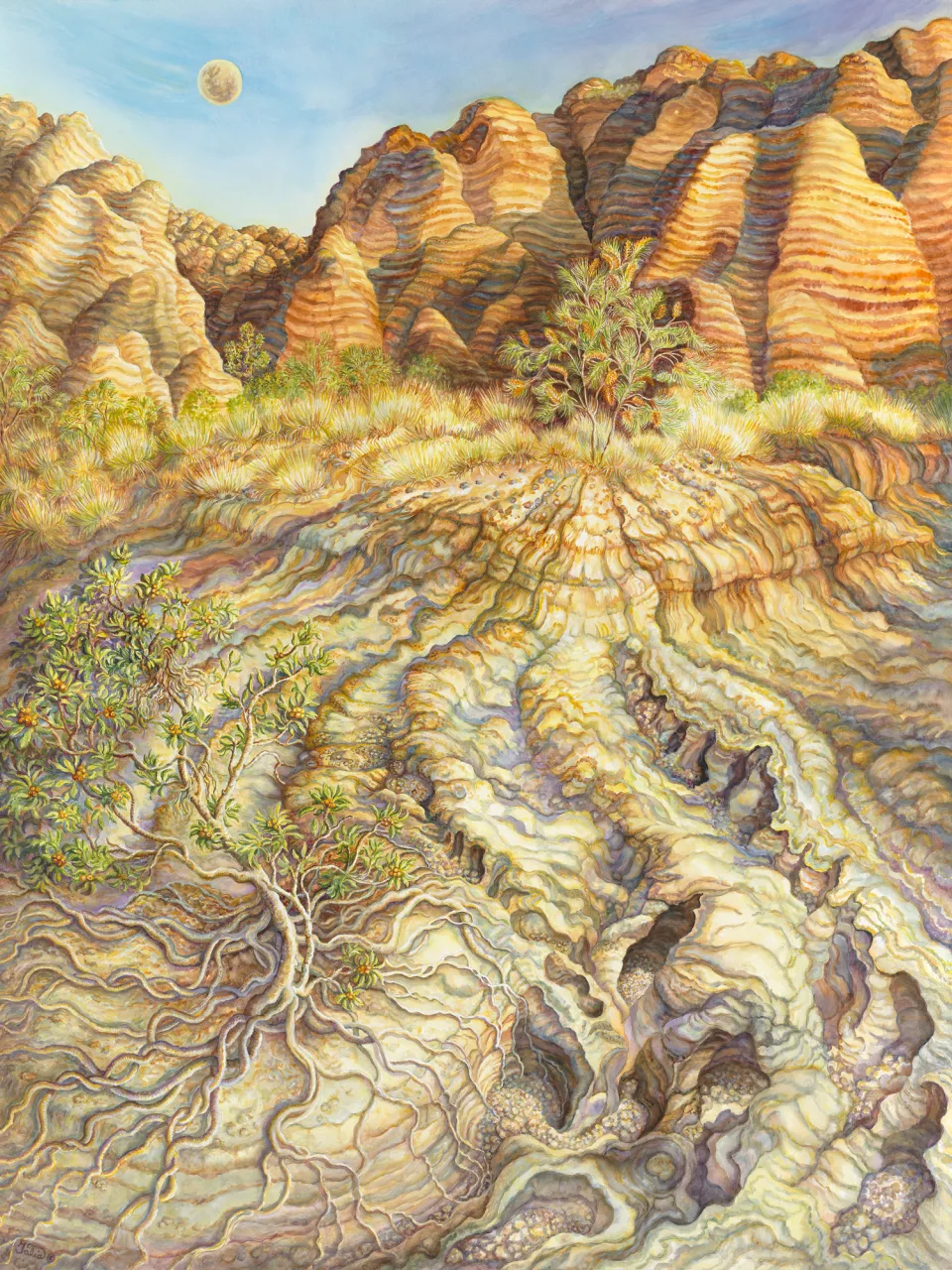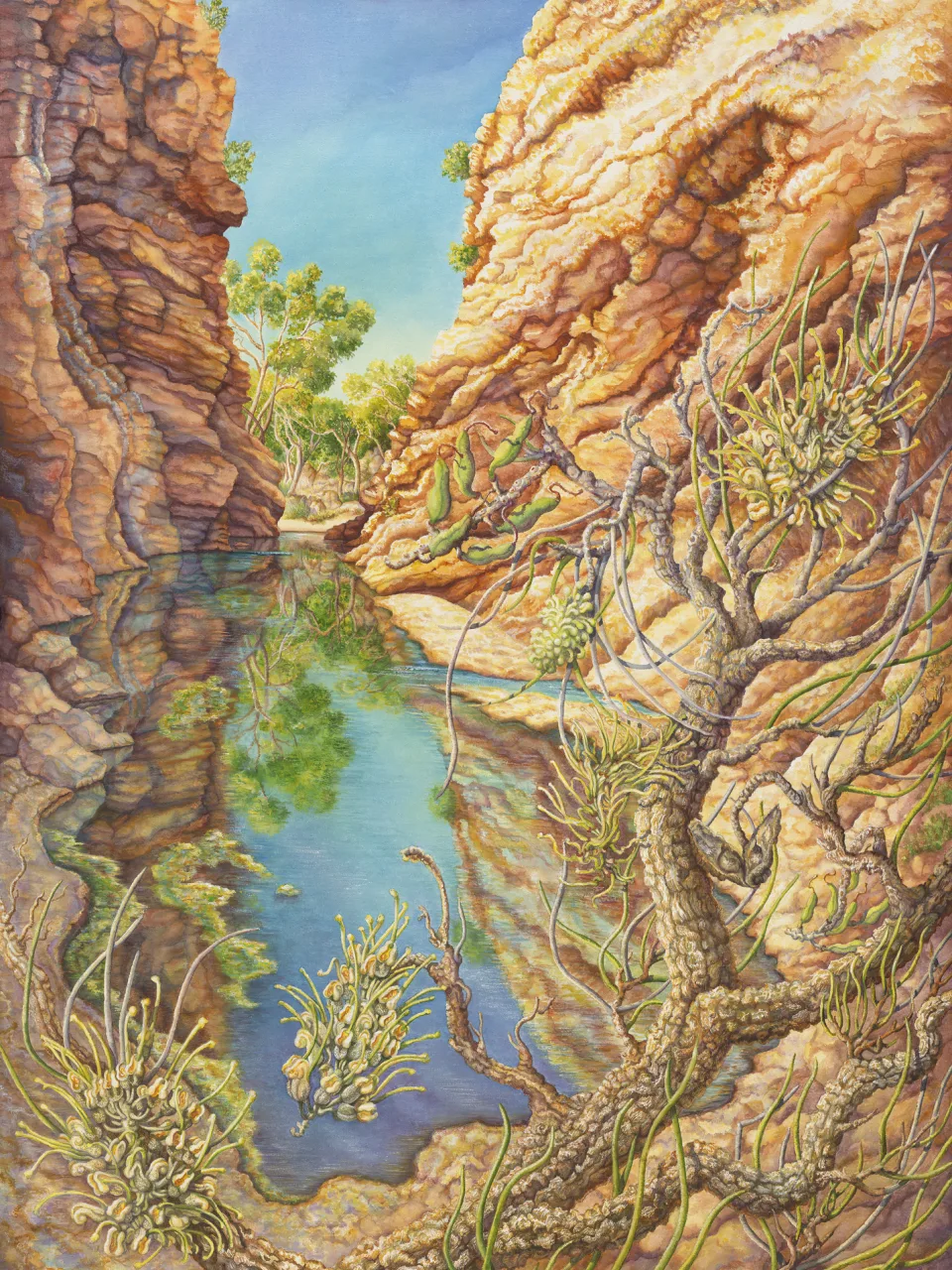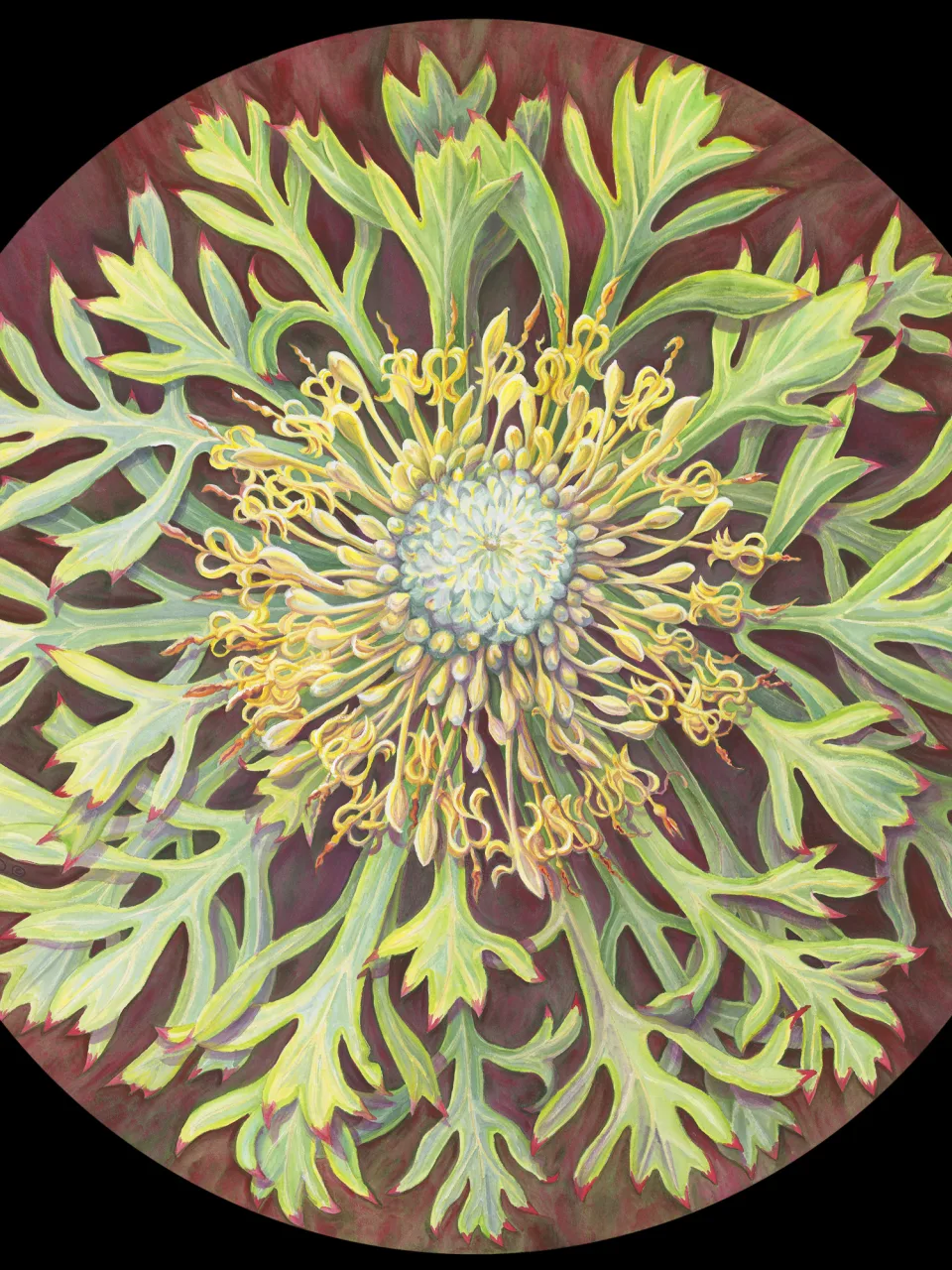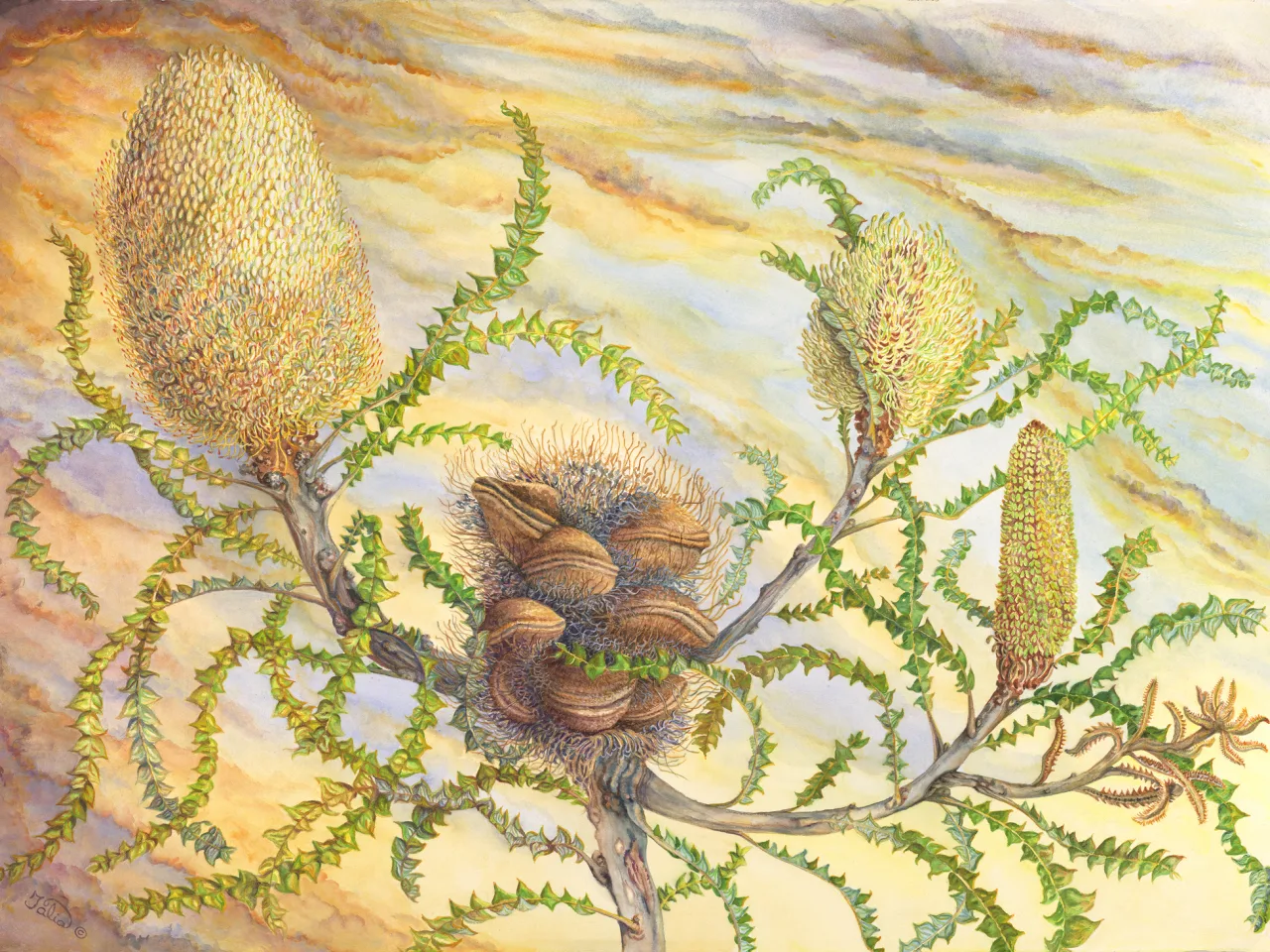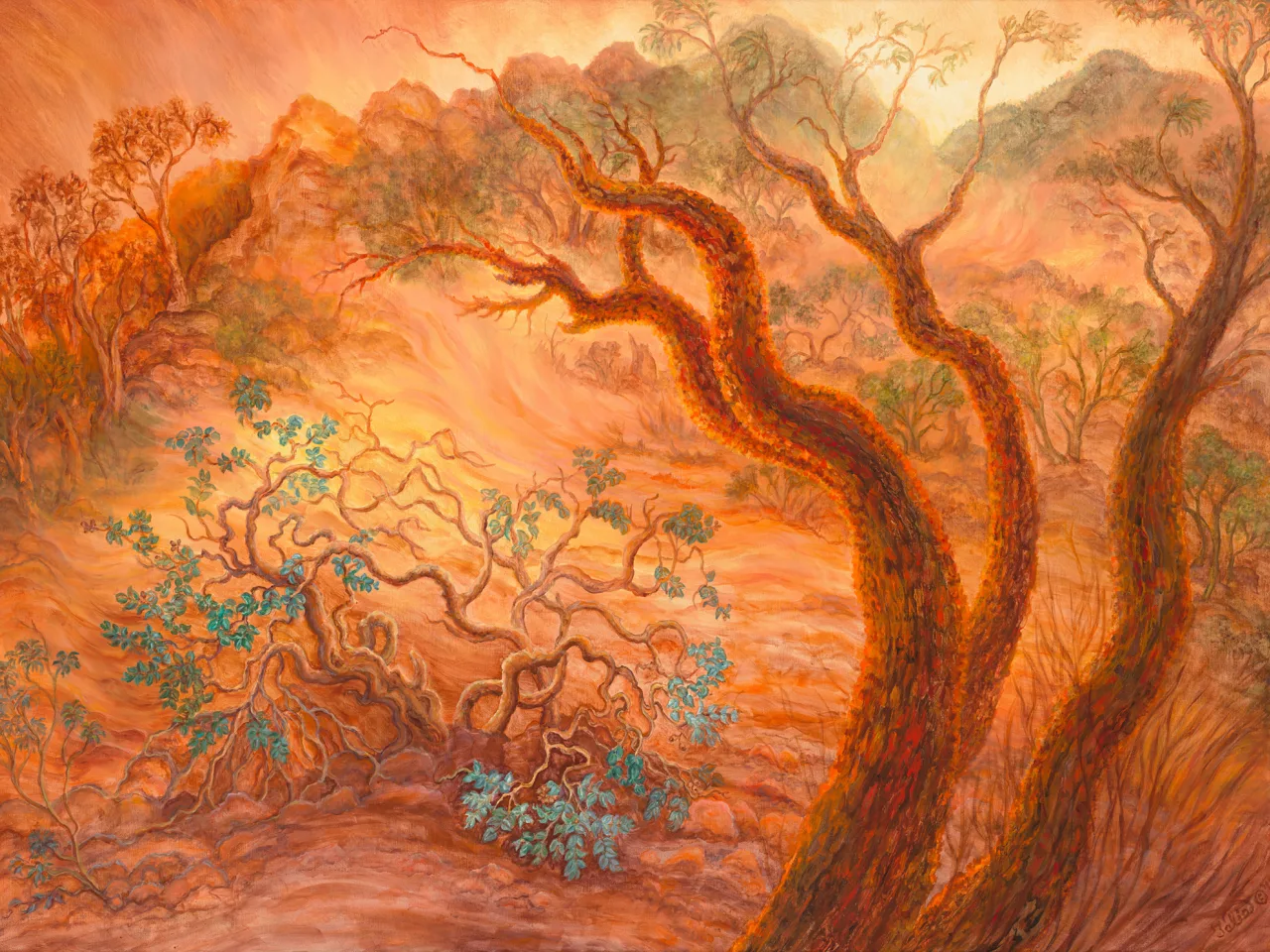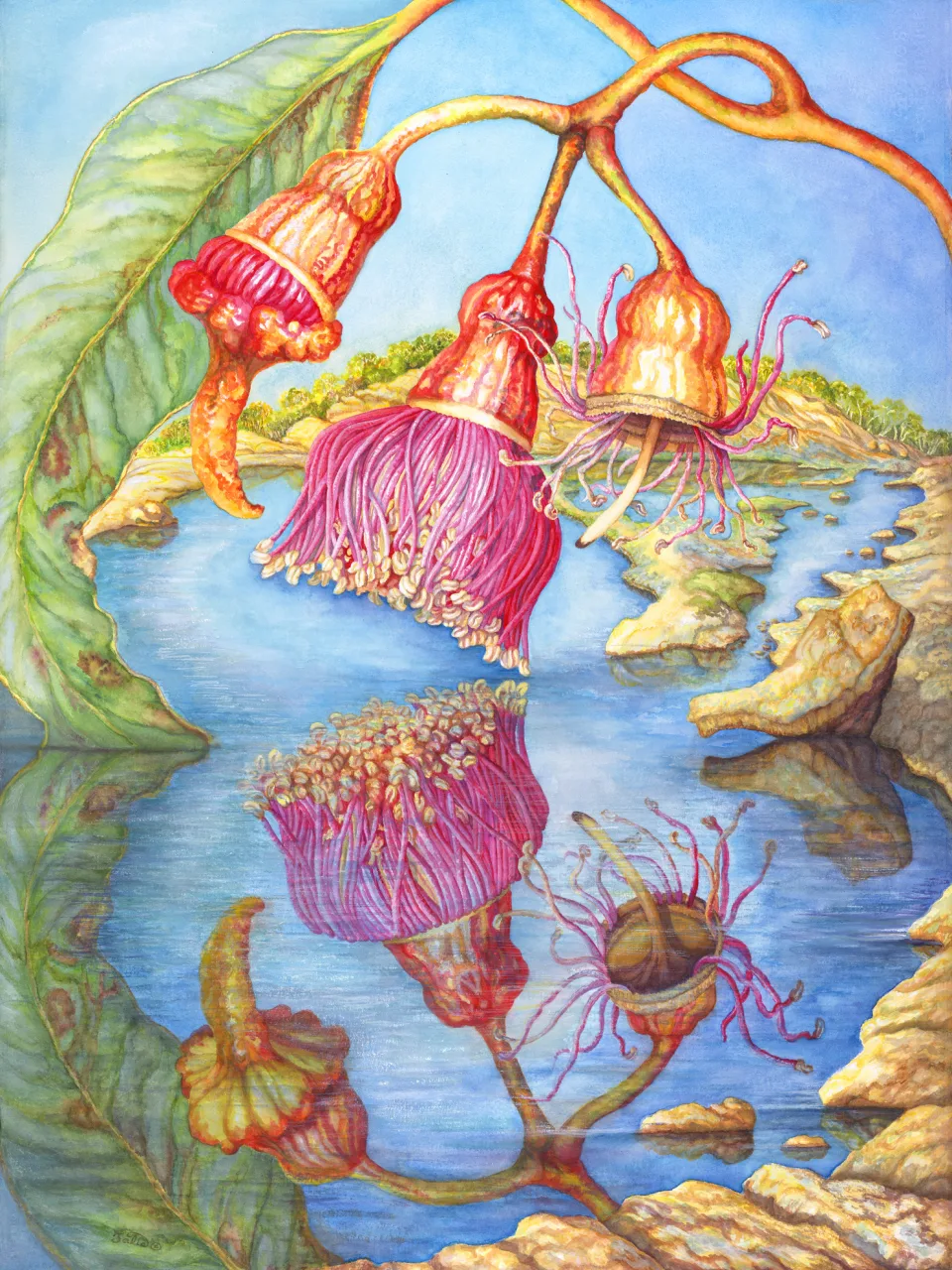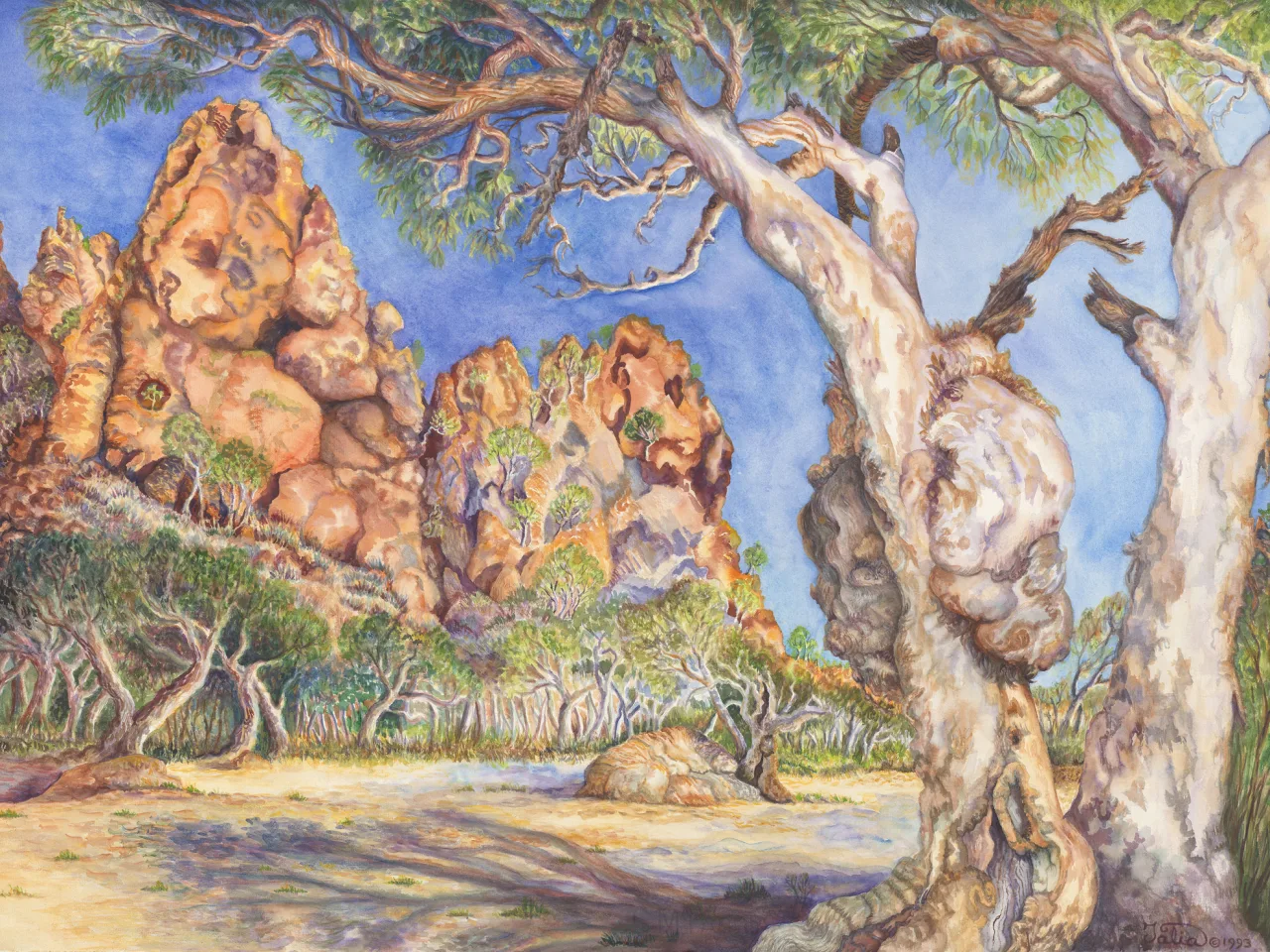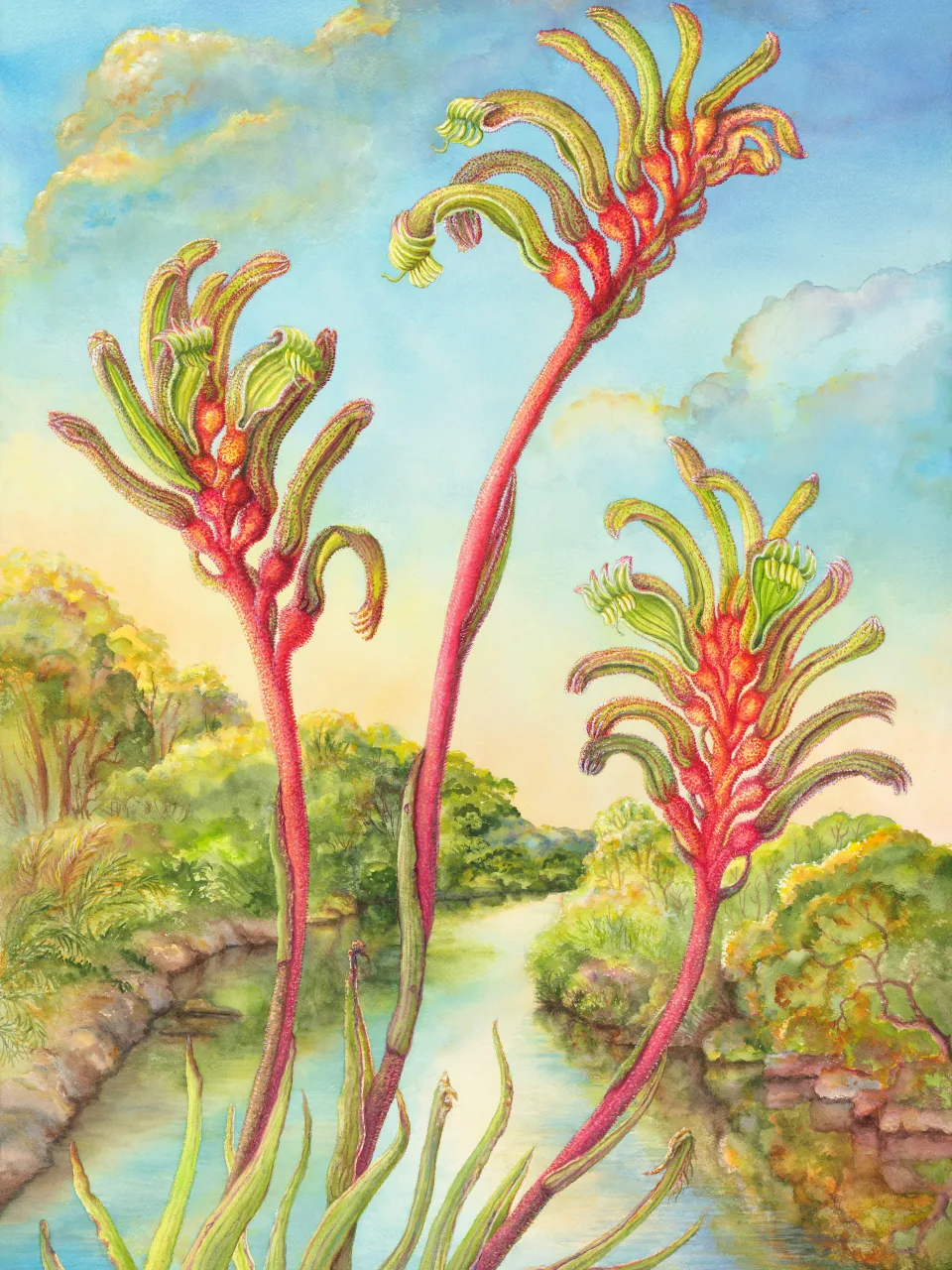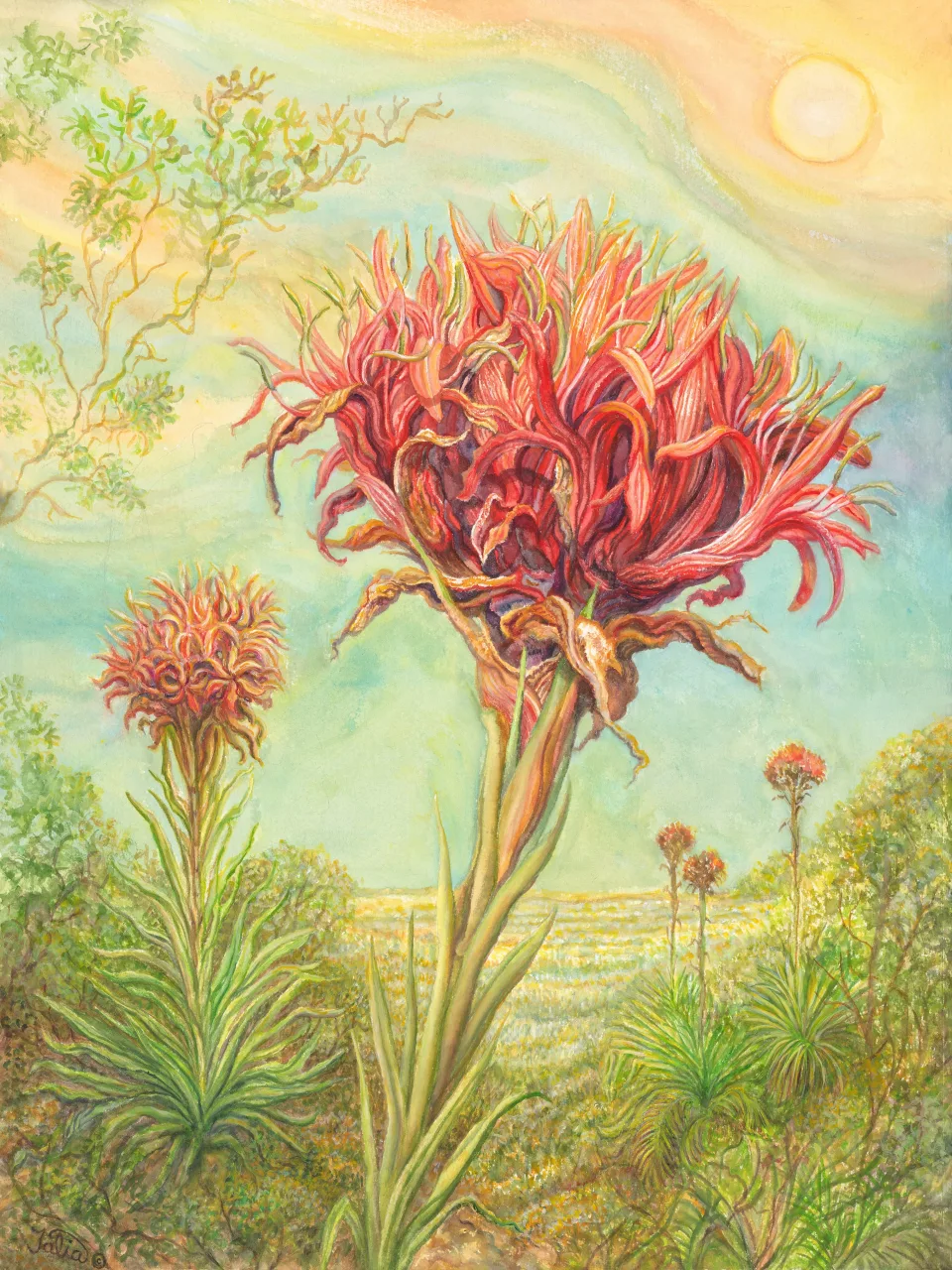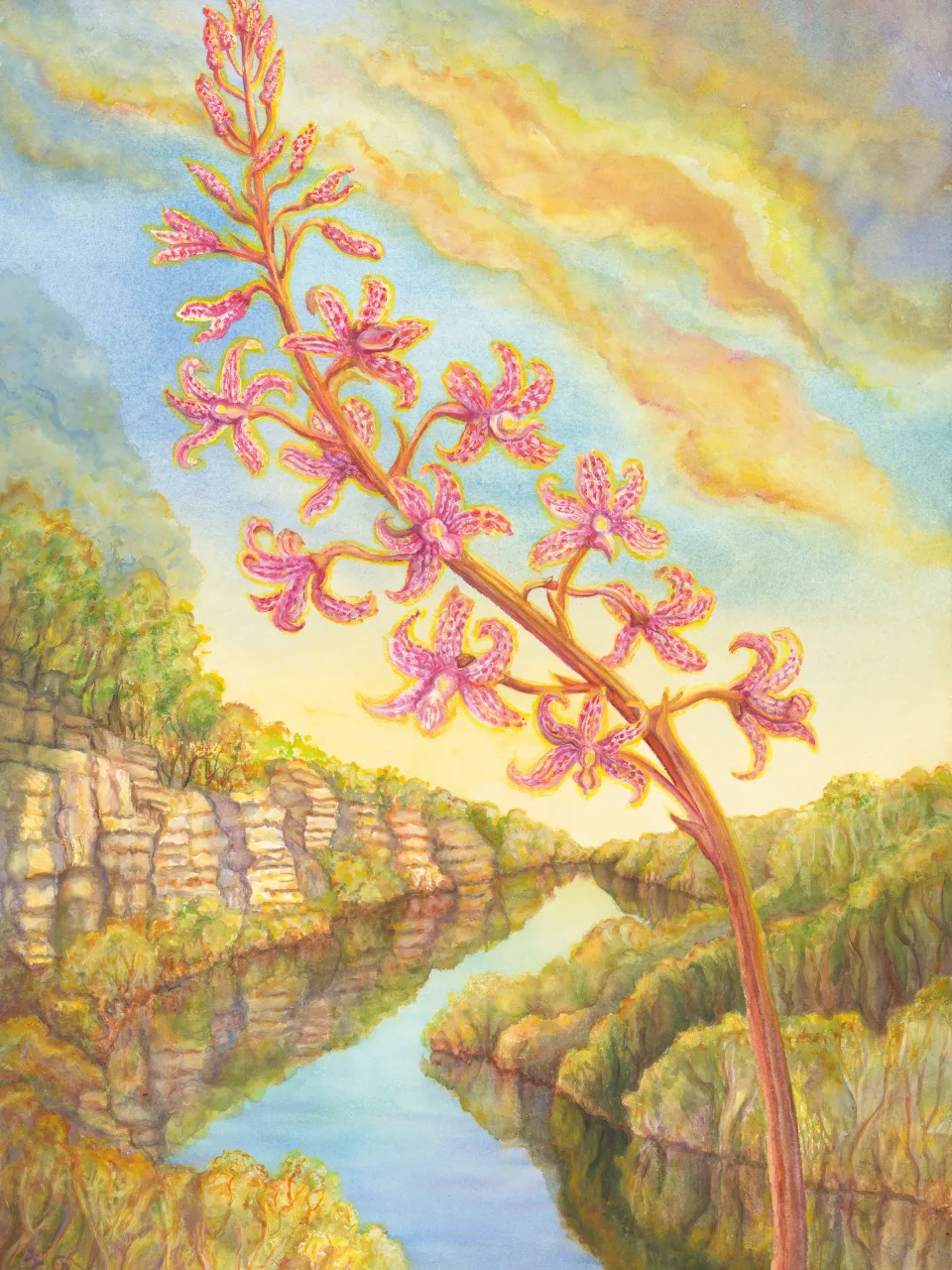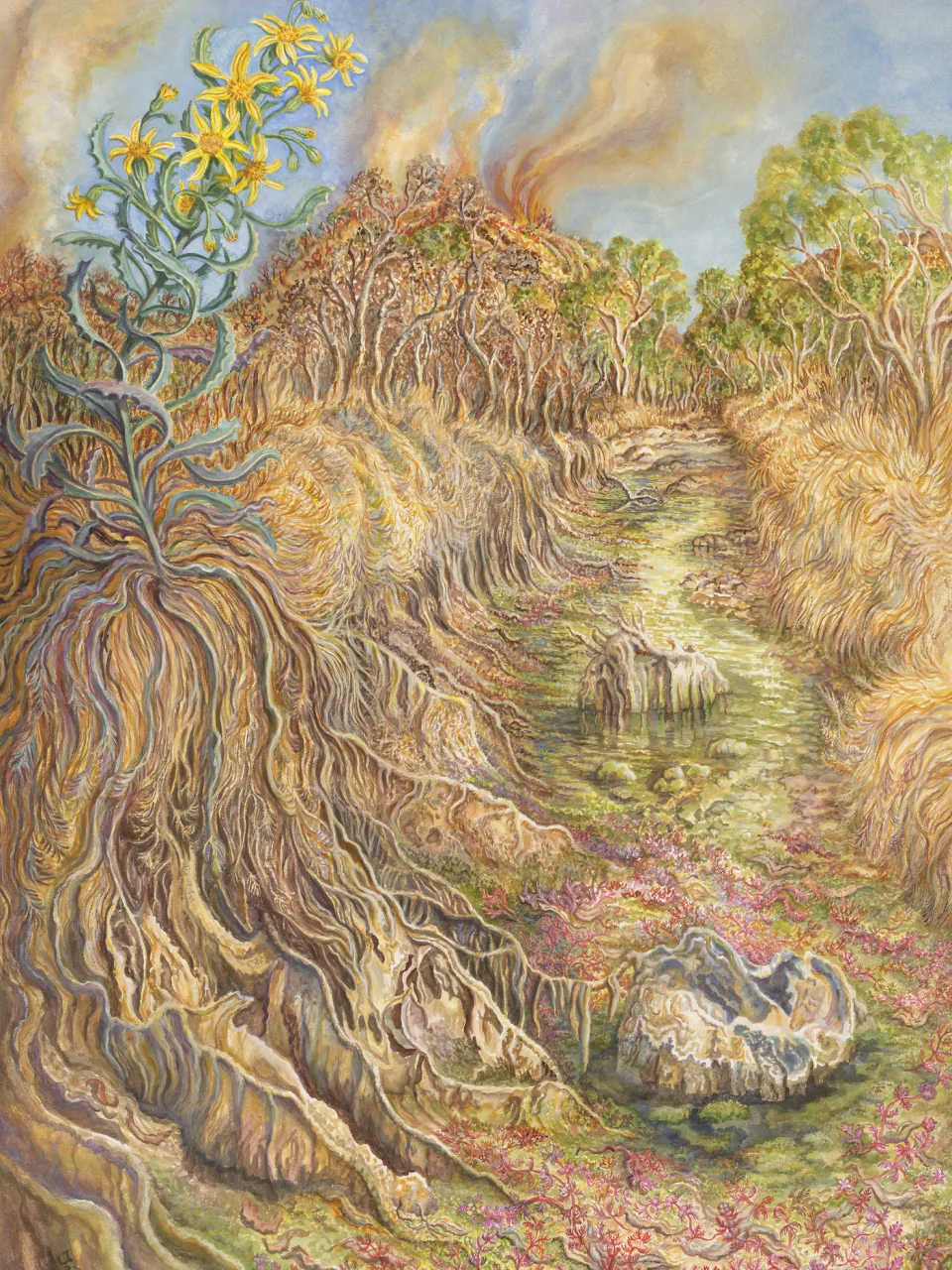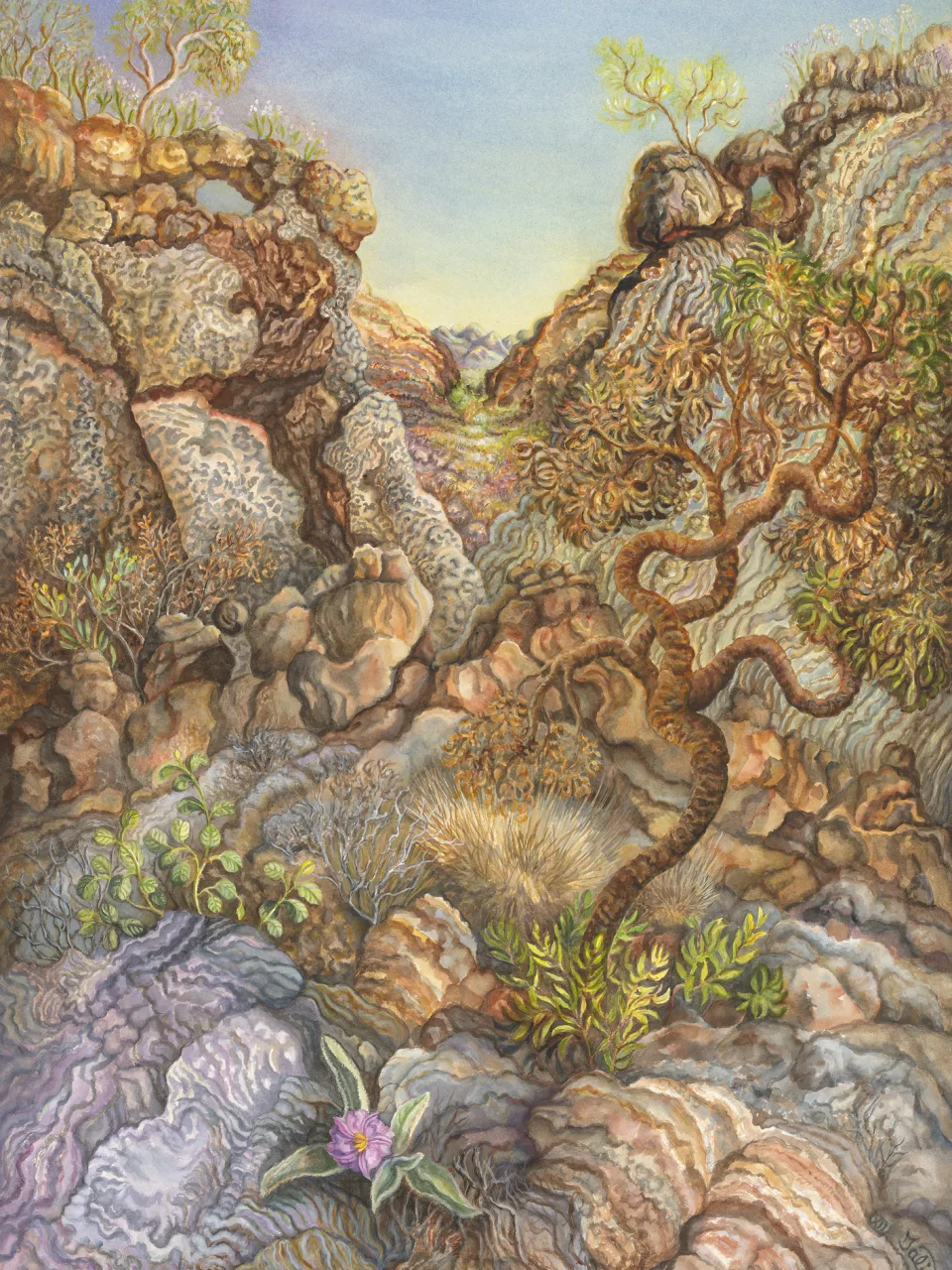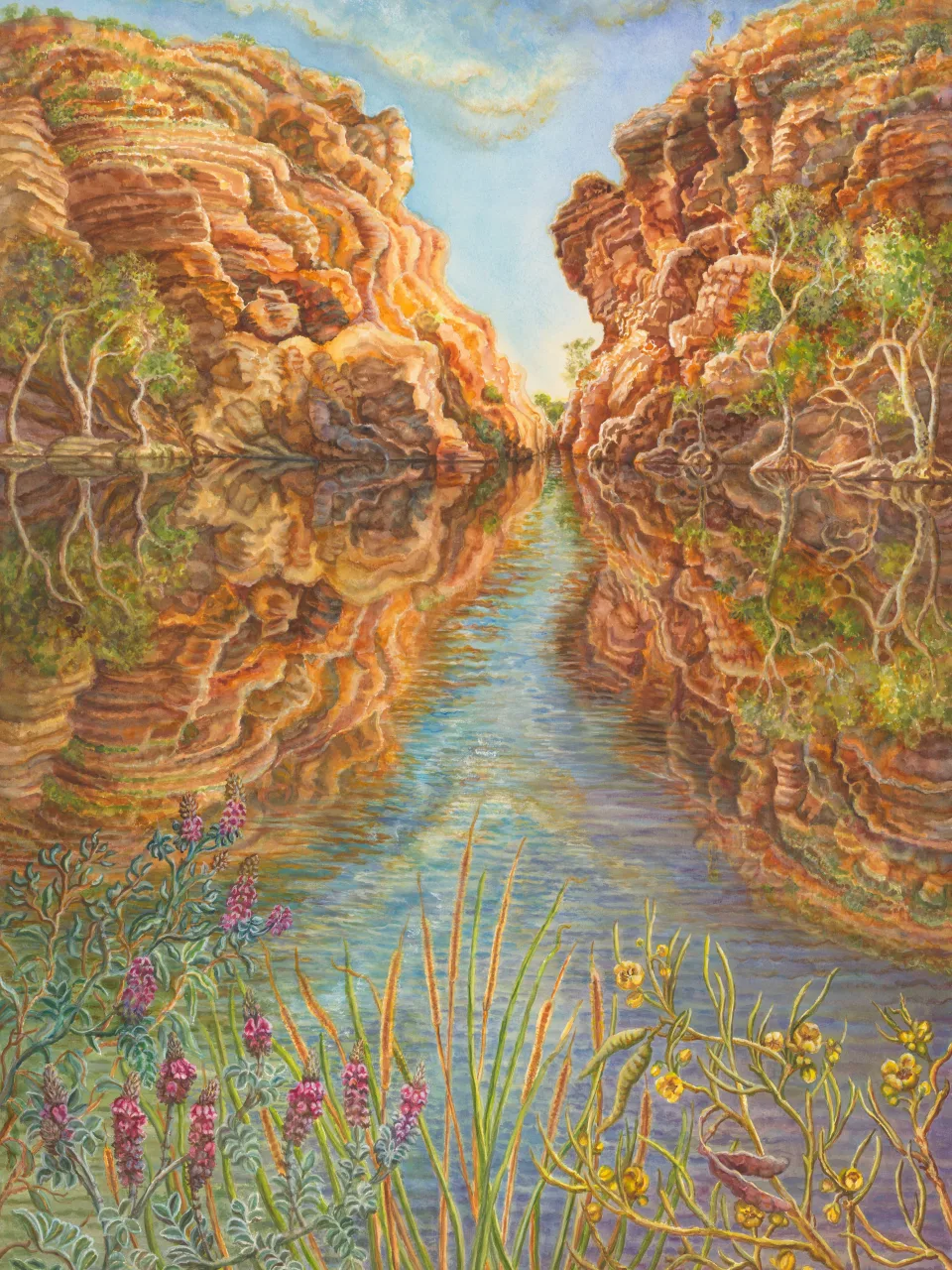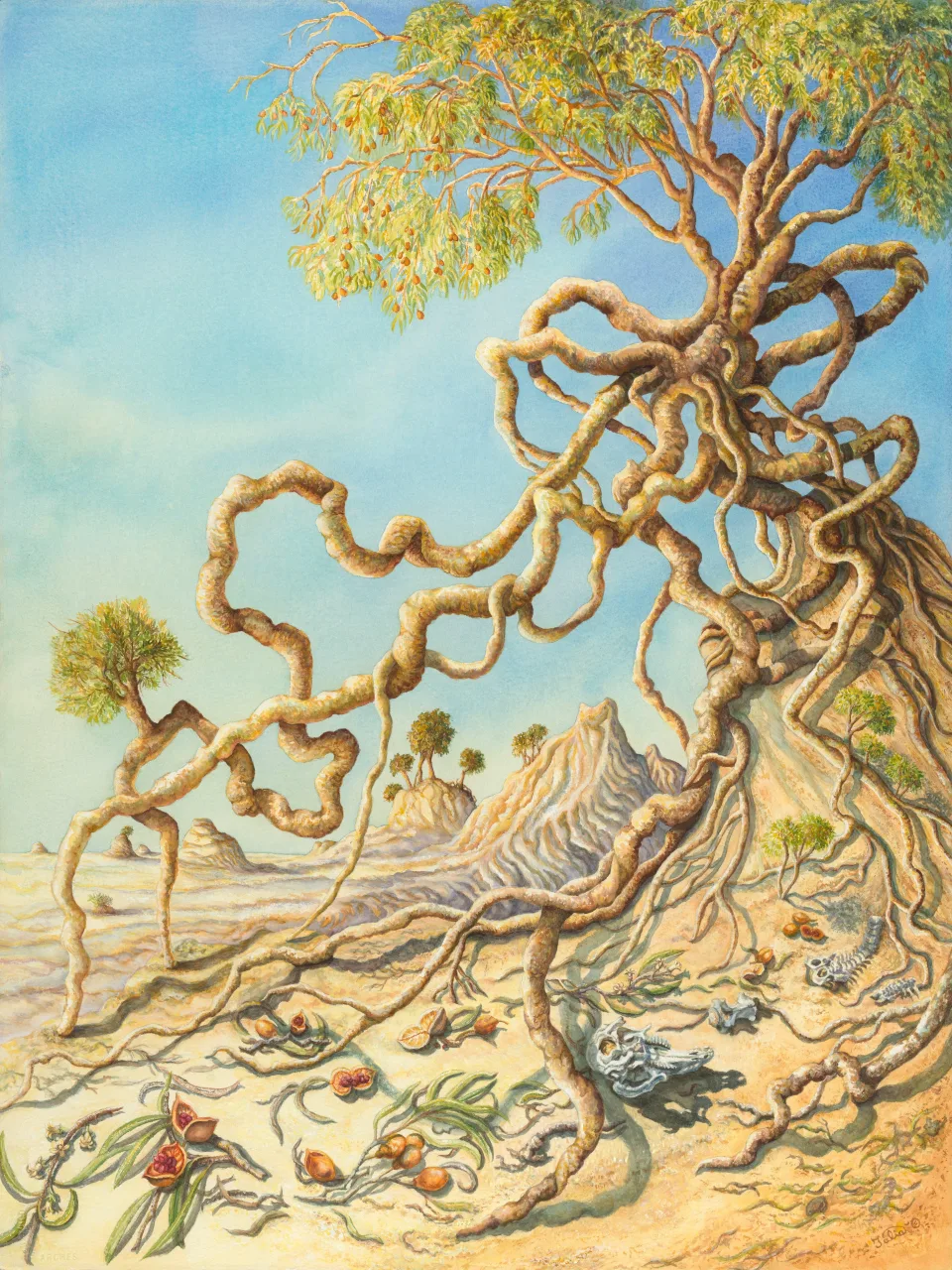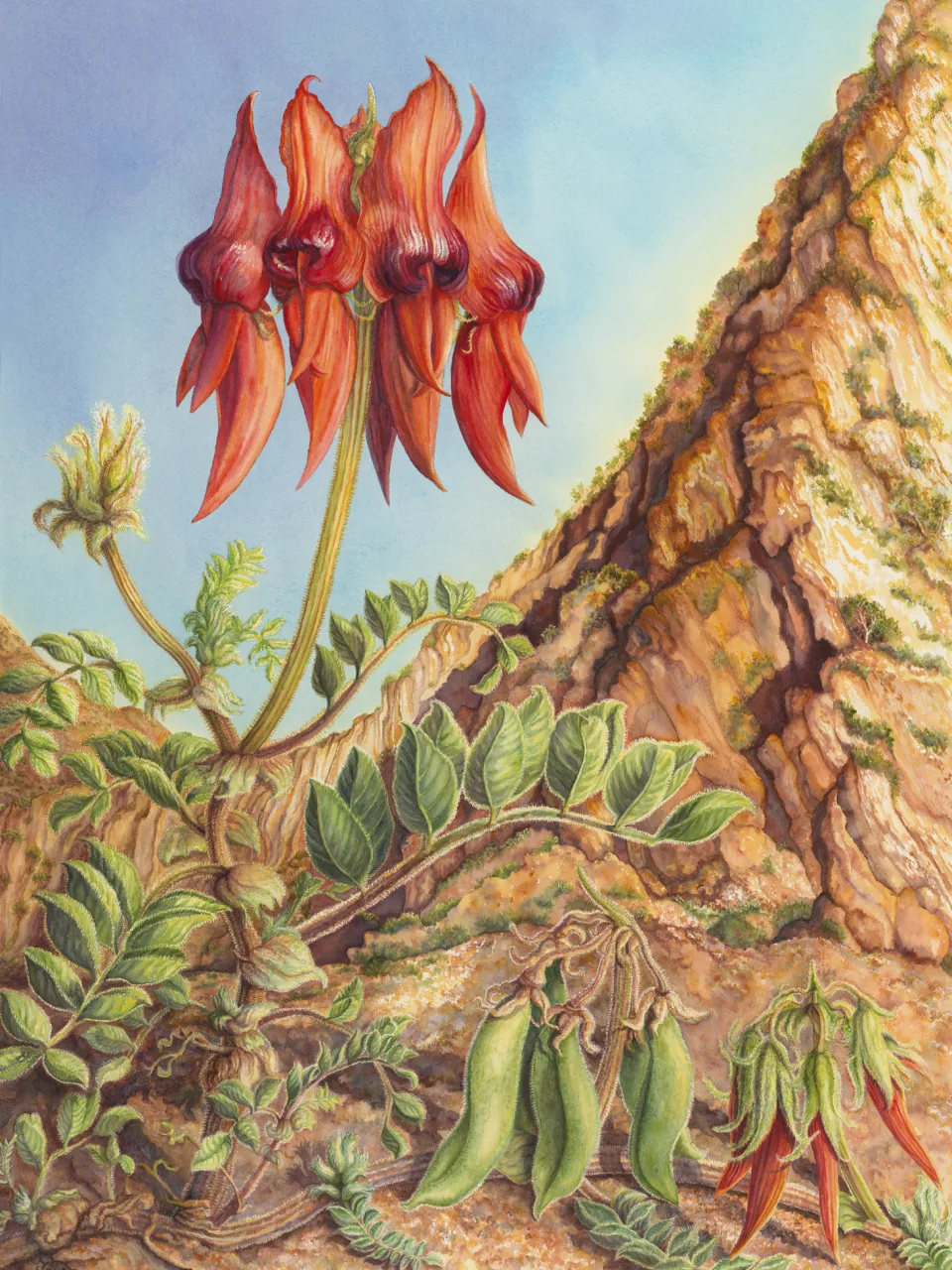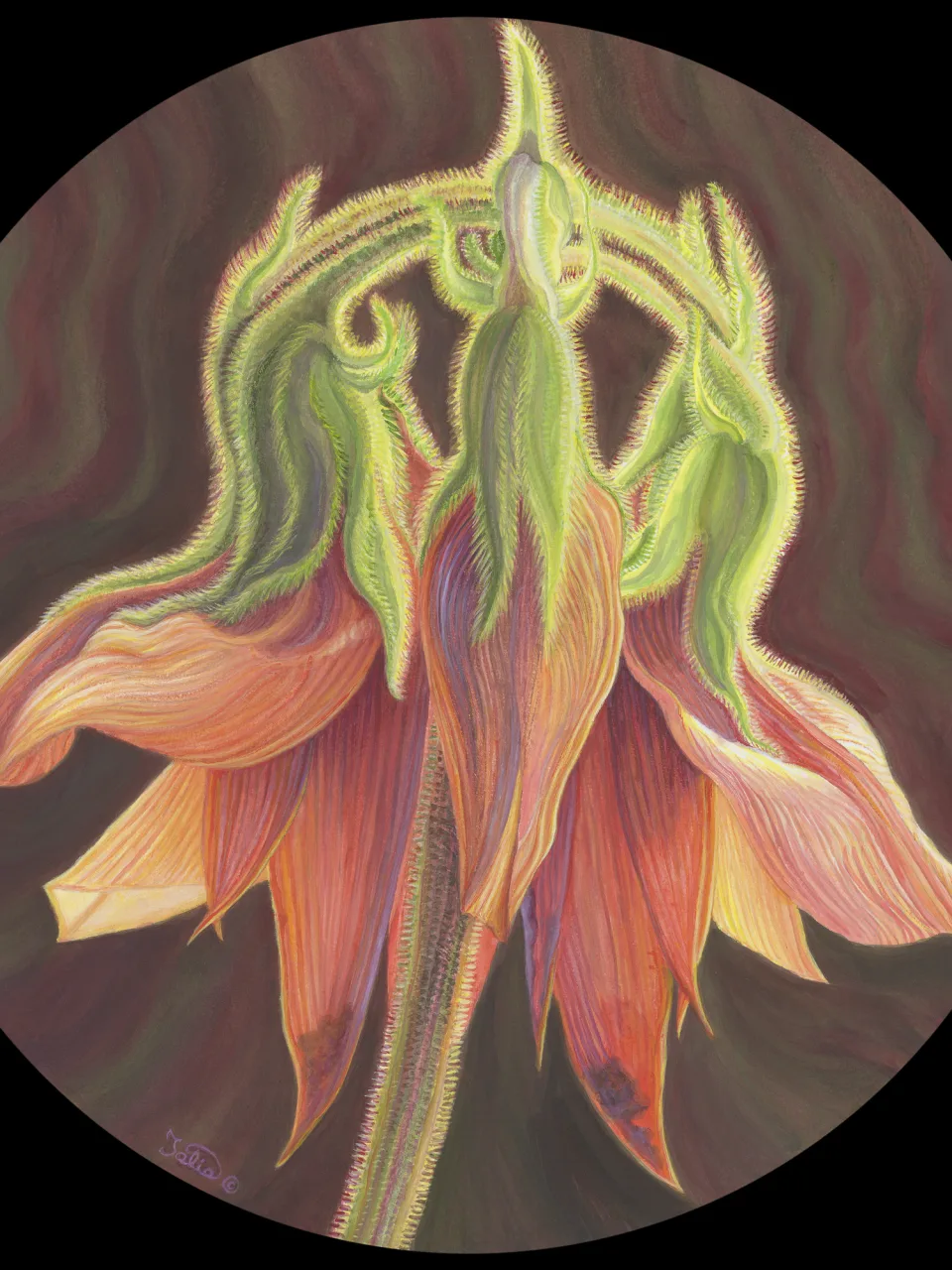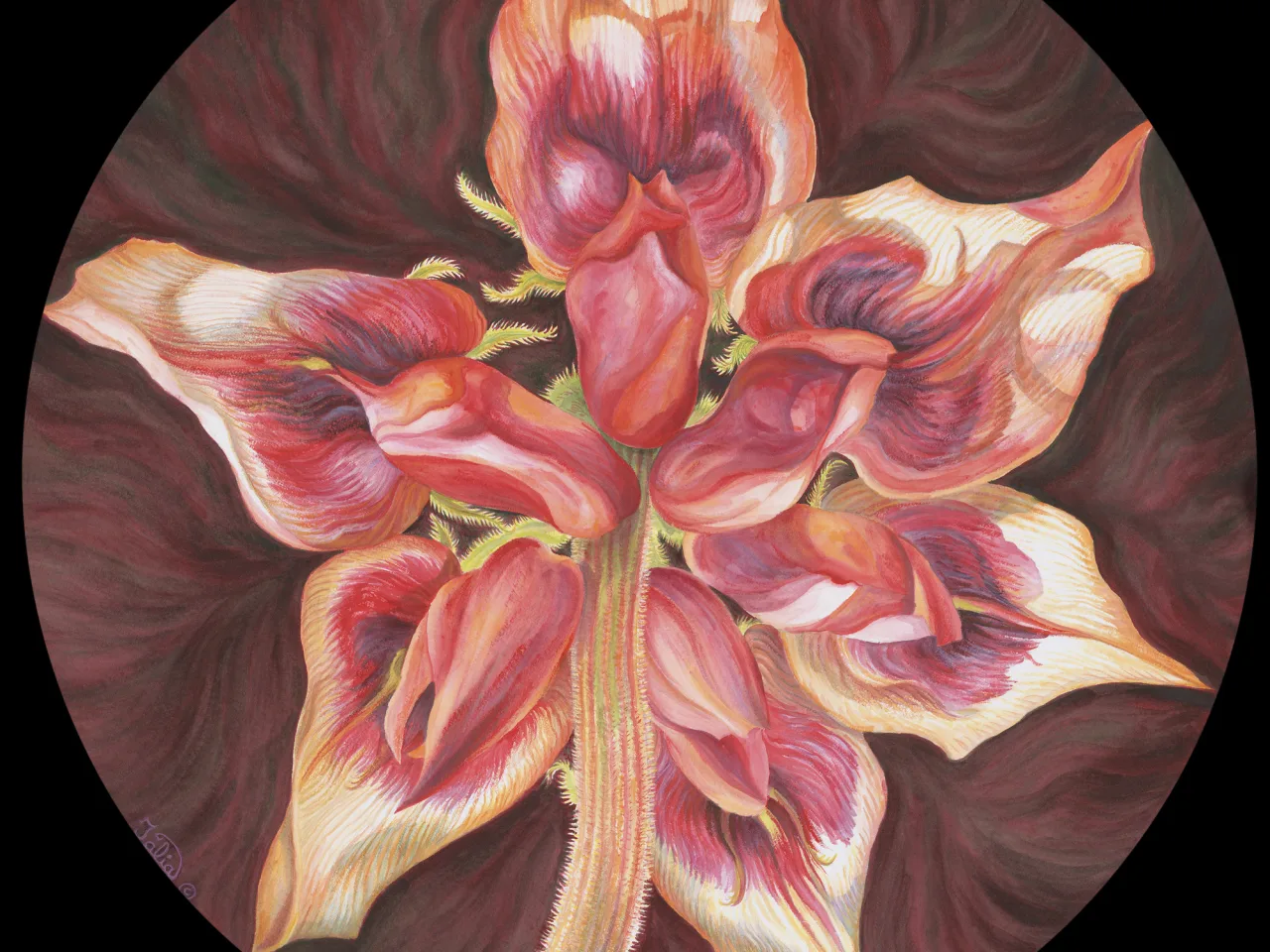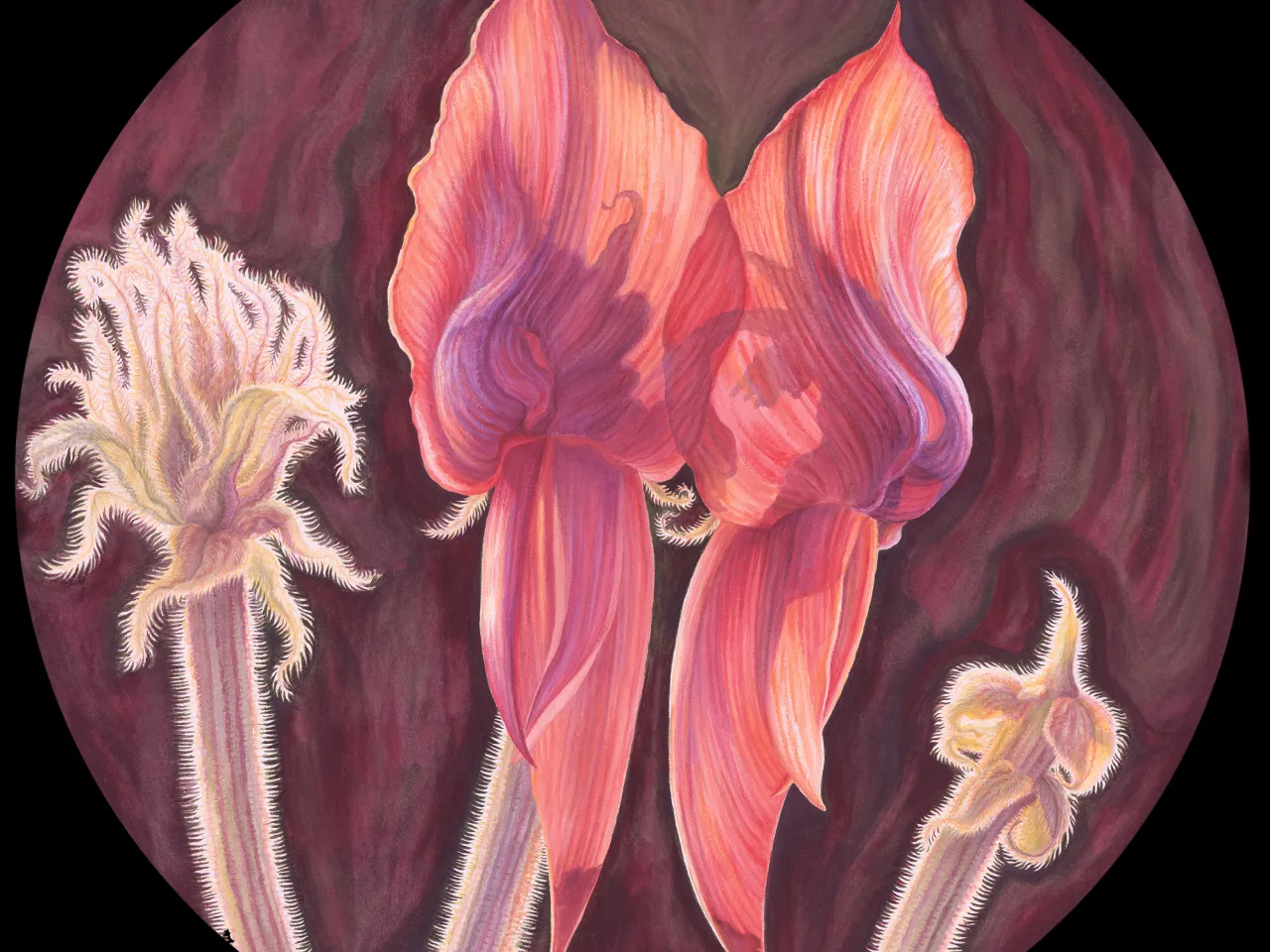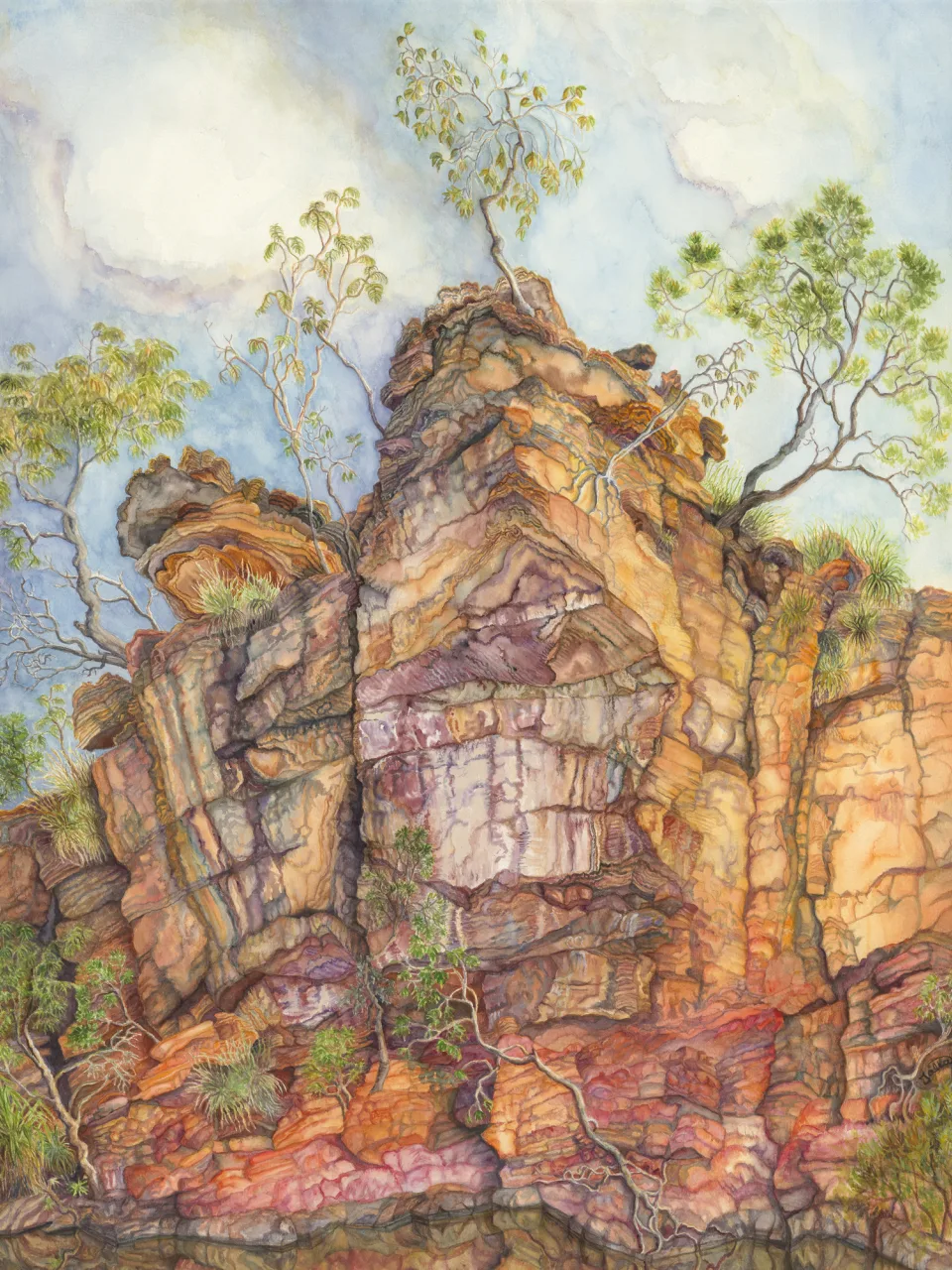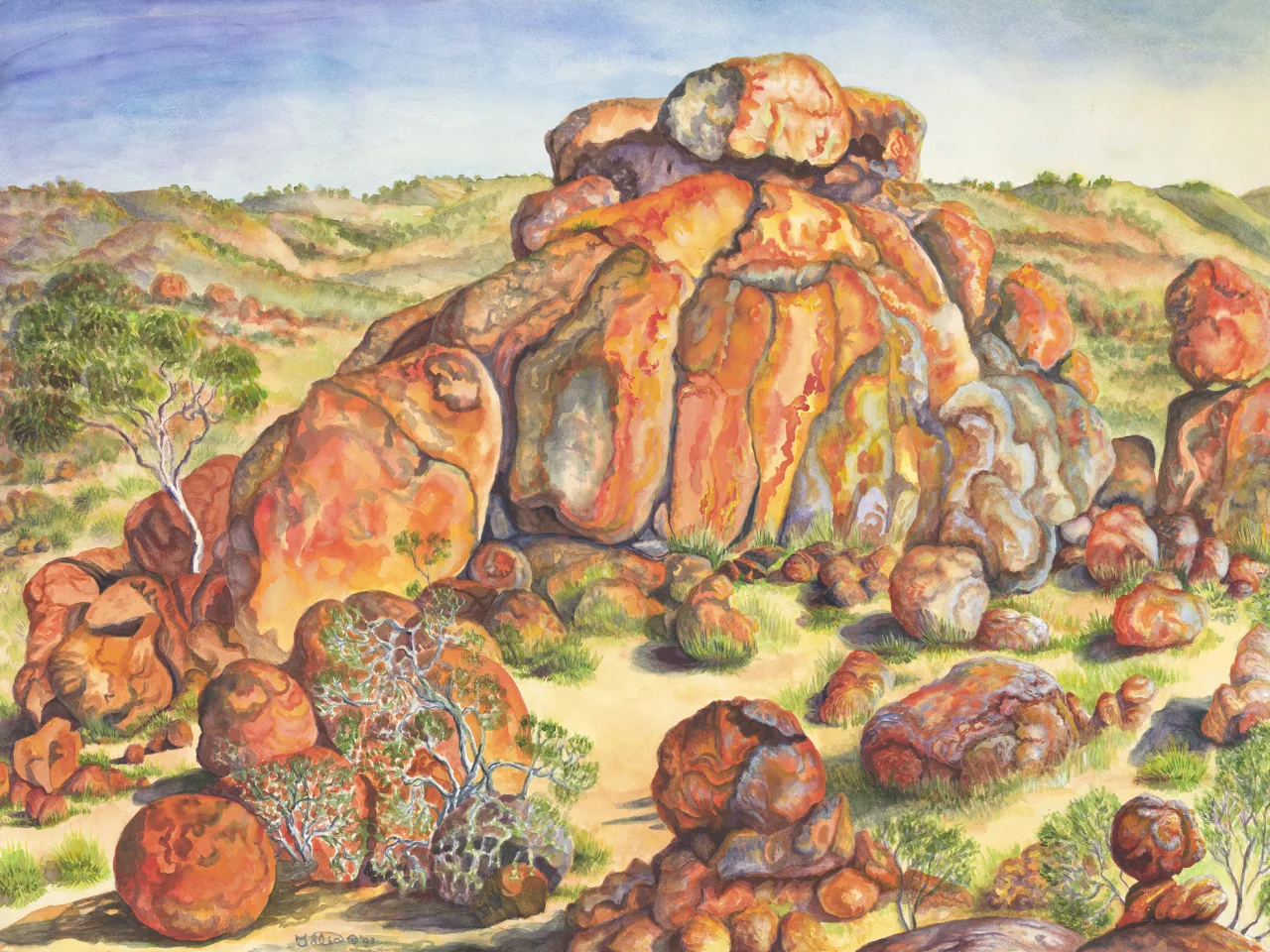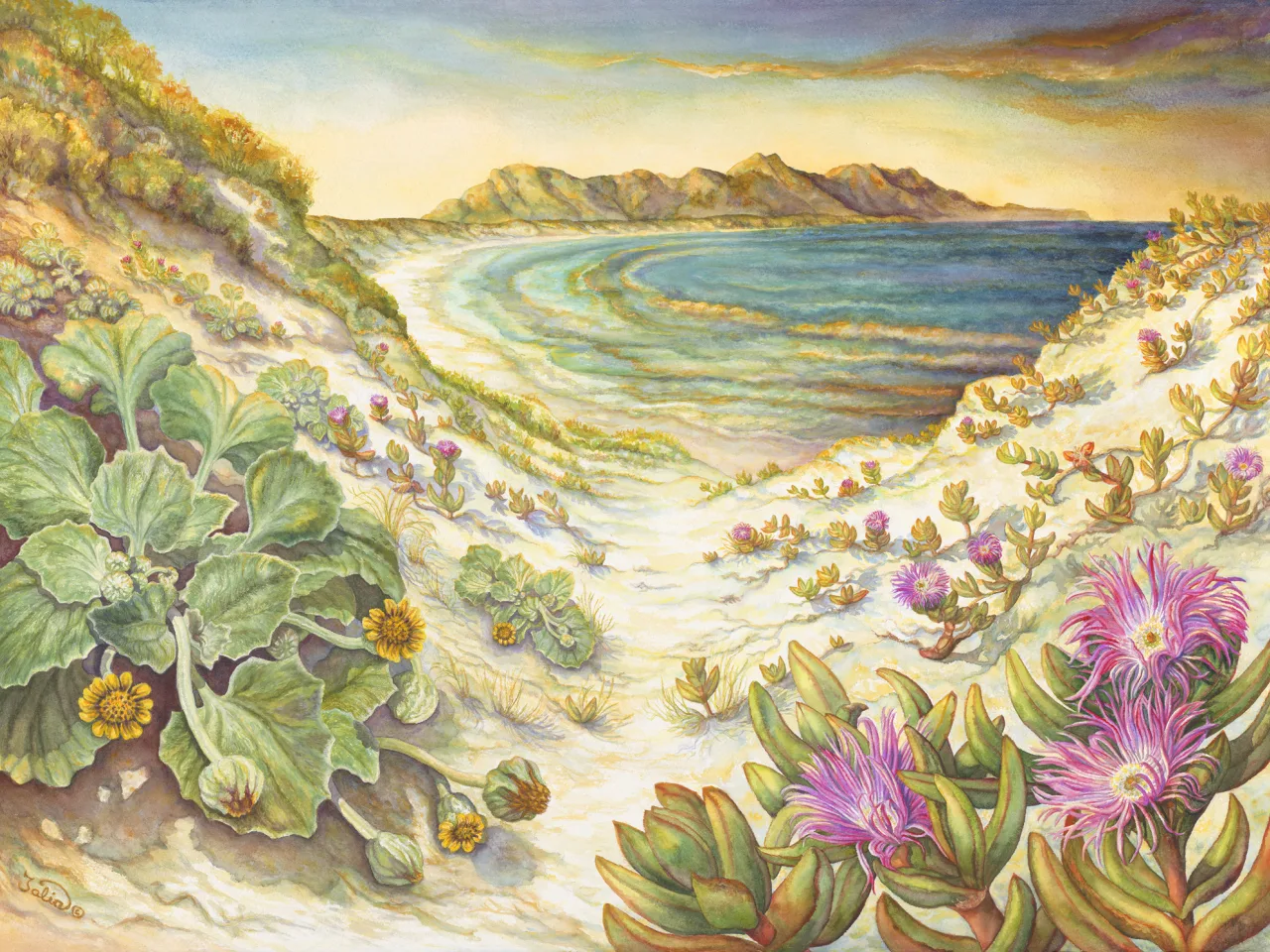Artwork 4 Colourful Array of New Growth and Old in a Tasmanian Rainforest
Section 4
Fungi, Mosses, and Lichens
Southwest National Park, Tasmania, Tasmania
- 1. Anopterus glandulosus (native laurel)
- 2. (bracket fungus)
- 3. Nothofagus cunninghamii (southern beech)
- 4. Parmelia sp.
- 5. Pseudocyphellaria glabra (lichen)
- 6. Ptychomnion aciculare (pipe cleaners)
- 7. Usnea sp. (old man’s beard)
Artwork 4
Buy a print
Limited edition giclee archival quality print on 310 gsm Ilford cotton rag (from an original work in watermedia on watercolour board, 76 cm high x 51 cm wide)
from the artist
In this painting the topmost branches belong to a magnificent tree commonly known as southern or Antarctic beech (Nothofagus cunninghamii) and now found only in Tasmania and southern Victoria. Nothofagus is a Gondwanan survivor from the Late Cretaceous Period 80–90 million years ago.
While exploring along the Port Davey Track from Scotts Peak at Lake Pedder, I came across an area of rainforest where many Nothofagus trees were old giants with large moss-covered buttressed roots and tangled branches reaching for sunlight far overhead. New leaves are red to golden bronze, and form a colourful contrast with the mature dark green leaves. The leaves are small and heart-shaped but fairly densely packed along the branches, so the canopy has a delicate lacy appearance. It is the dominant tree in Tasmania’s temperate rainforest.
I found this bracket fungus with an expressive smile and mossy hairpiece growing on a Nothofagus tree trunk. It was surrounded by an appreciative audience of mosses and lichens, and framed by the elegant leaves of “native laurel” bushes (Anopterus glandulosus), which are endemic to Tasmania. Anopterus has only two species and both are endemic to Australia. When rainforests stretched from Tasmania to Queensland, Anopterus could have ranged widely. However as Australia drifted north and became an increasingly arid island continent, over the past 35 million years or so, rainforests retreated into “islands of refugia”—smaller, wetter areas—down the eastern seaboard (White, 1994/1998, pp. 79–99, 106–117).
The bracket fungus was about 20 cm long and displayed several annual growth rings, which gave this particular fungus its comical smiling appearance, also greatly enhanced by the mossy “hairpiece” growing luxuriantly on top. The shoots of this moss resemble tangled pipe-cleaners, hence the common name for Ptychomnion aciculare—“pipe cleaners”. Note the upright capsules rising above the body of the mossy hairpiece—they contain spores for reproduction (Meagher & Fuhrer, 2003, pp. 2–3, 72–73).
There were many lichens on this and nearby Nothofagus trees, and some could be clearly identified.
Although there were intermittent showers, I was able to take hundreds of photos including numerous macro shots, during several days walking the tracks and exploring the rainforests. Most could be identified later, at least to genus if not to species level. However, I gave up on the “smiling fungus”, deciding to keep it as the mysterious, enigmatic “Mona Lisa” of the artwork!
